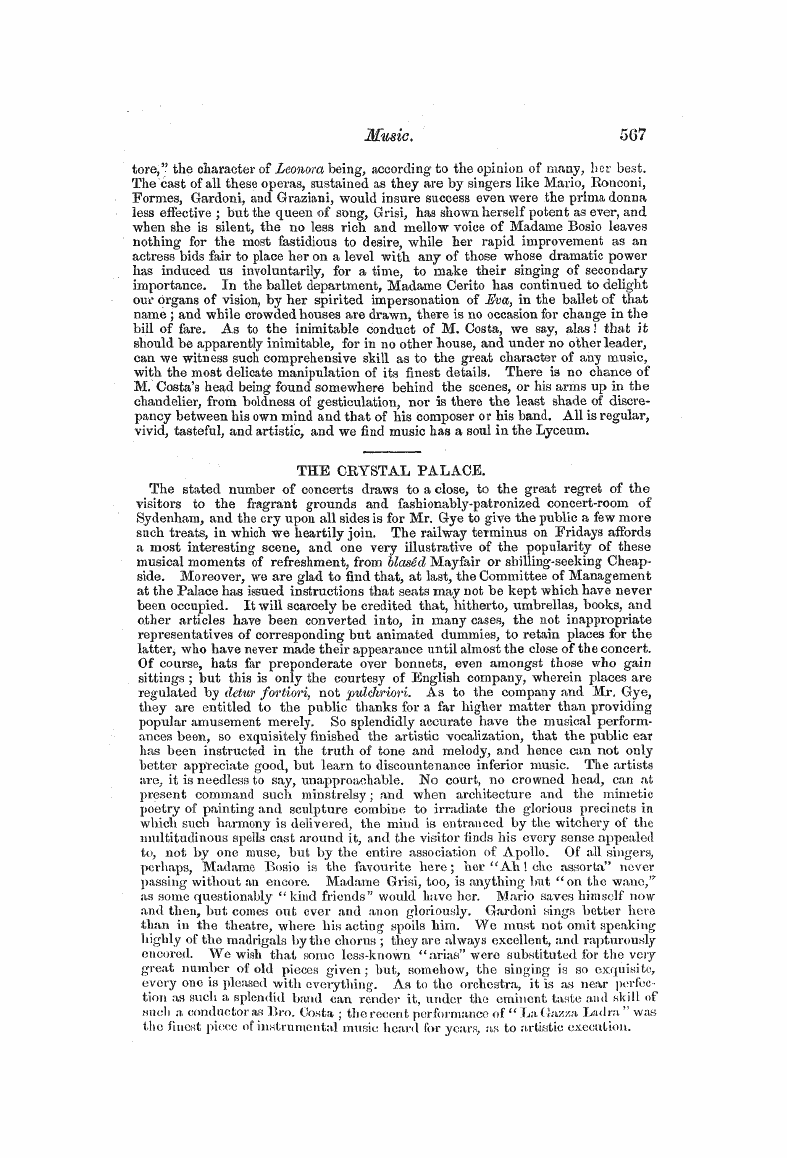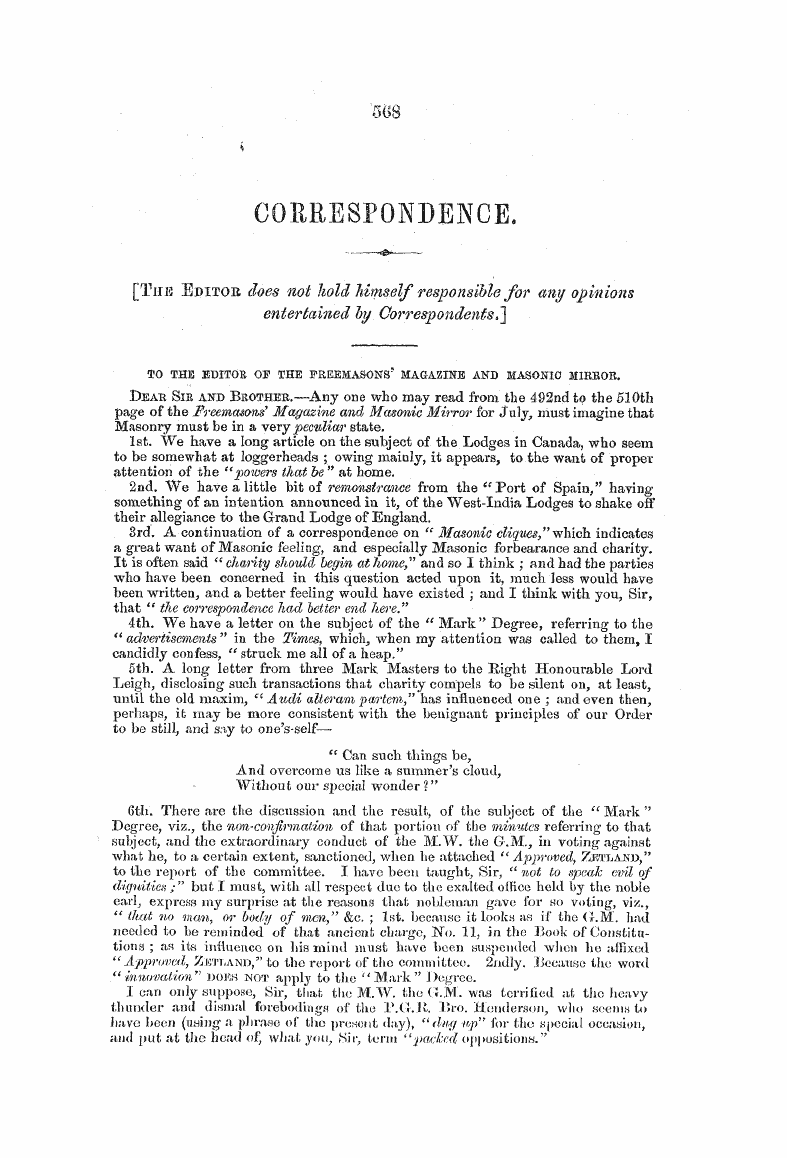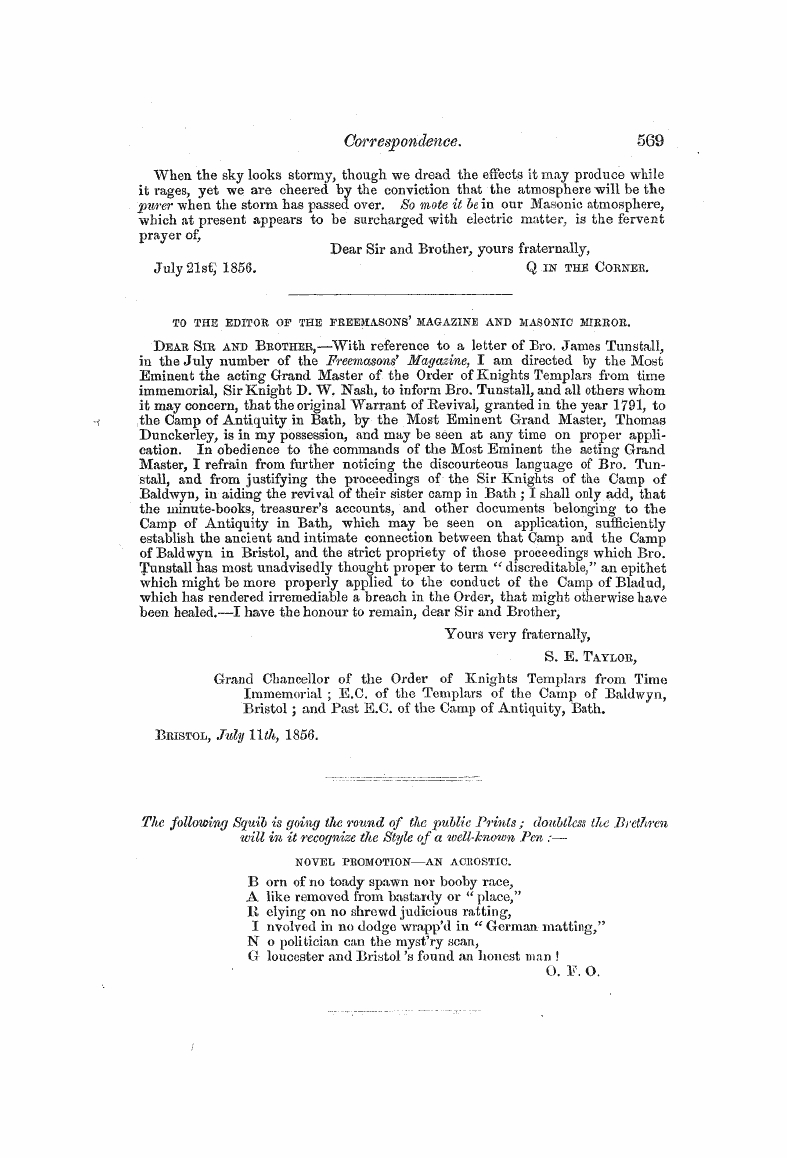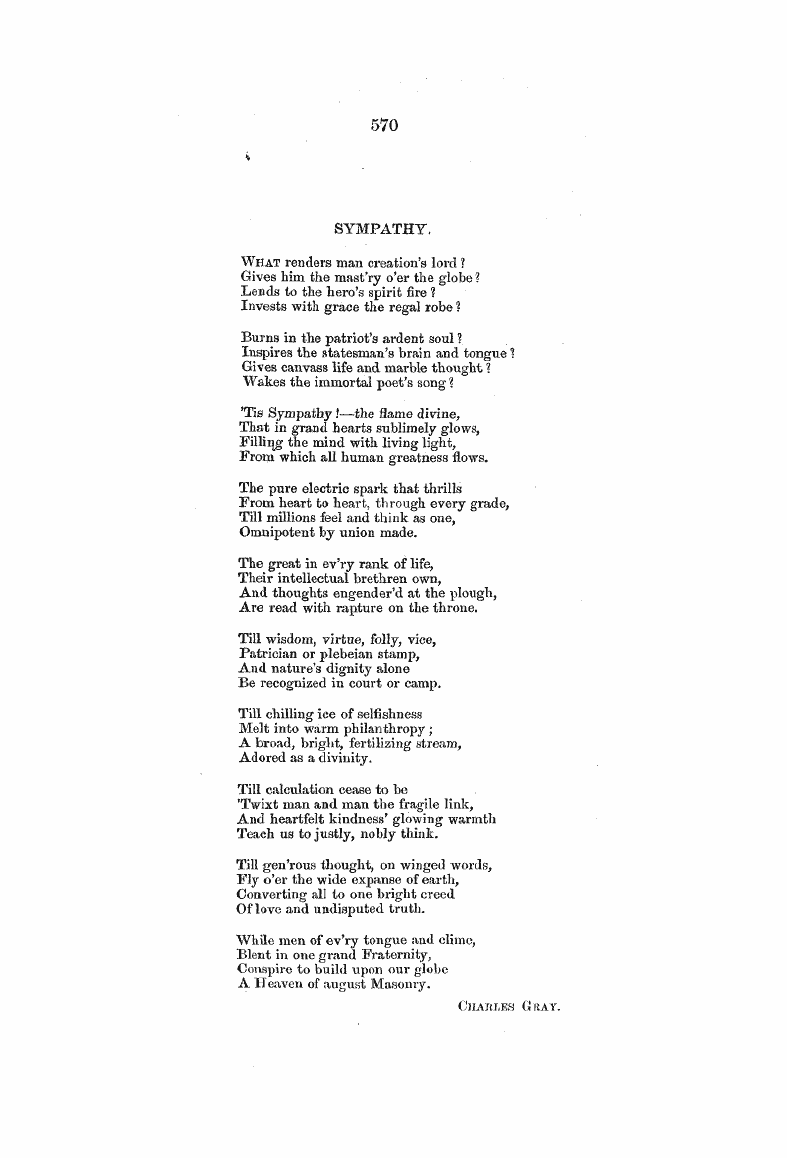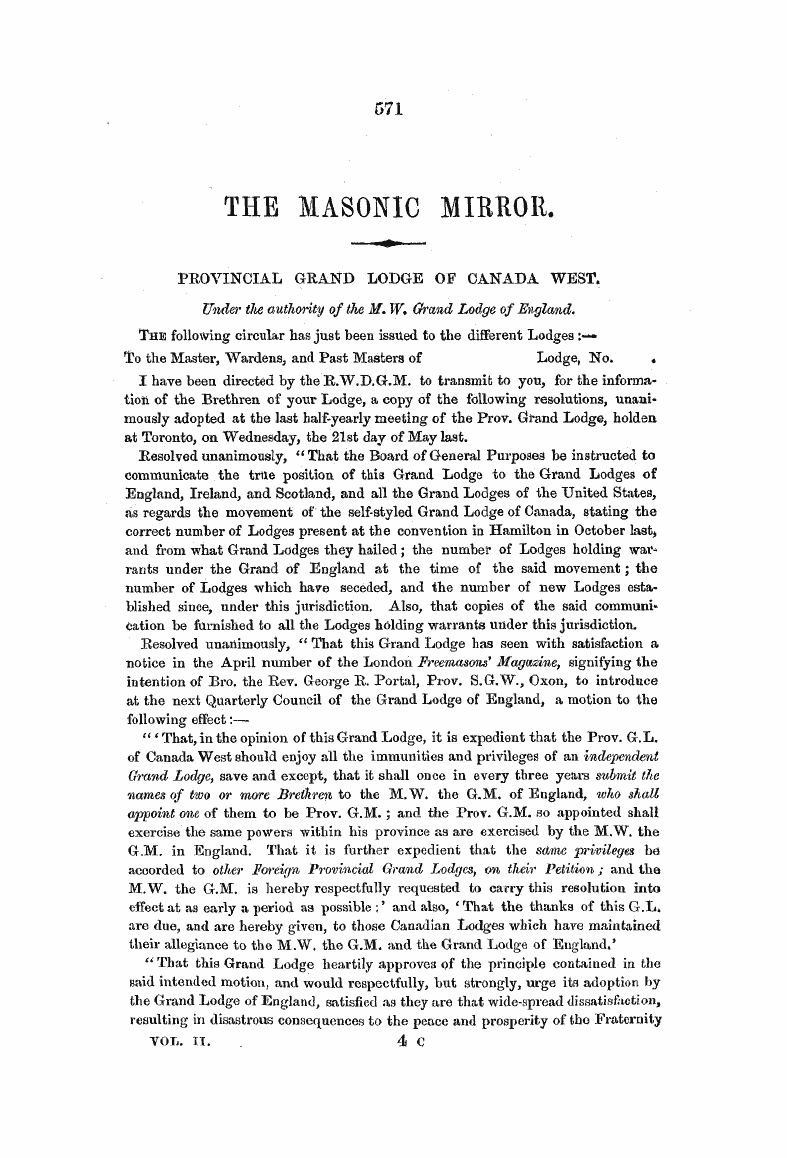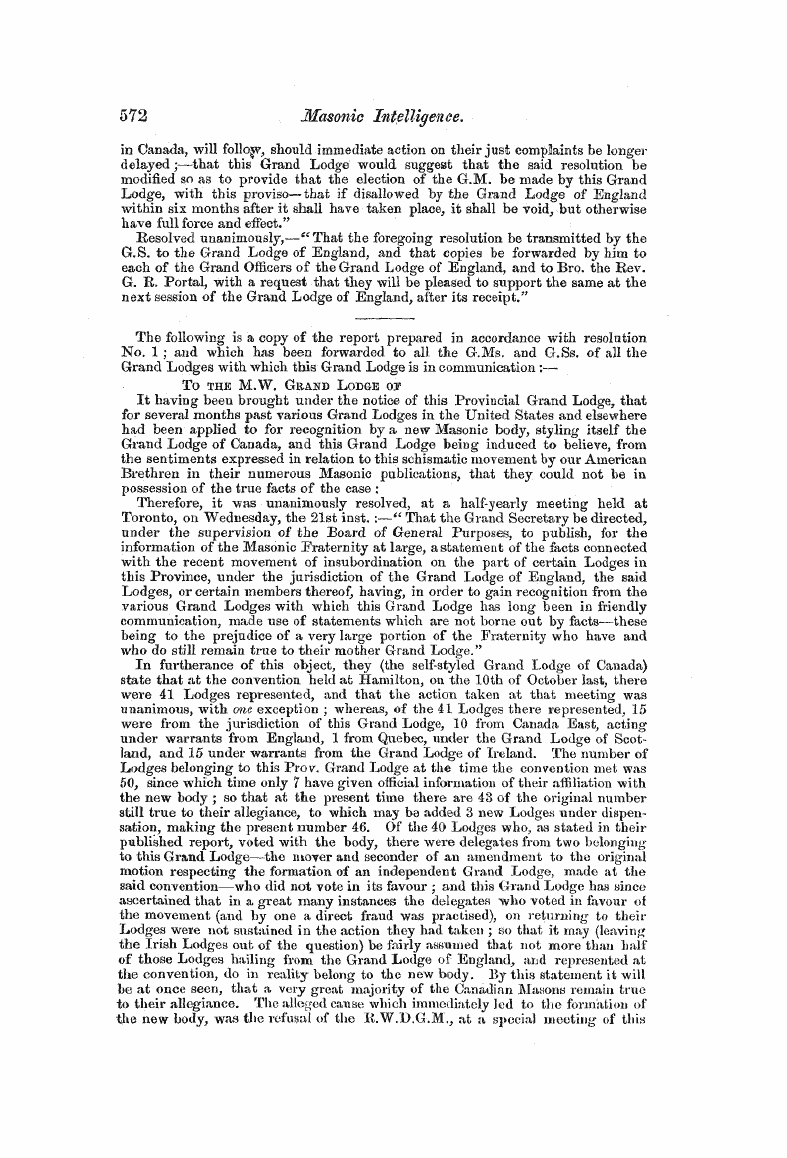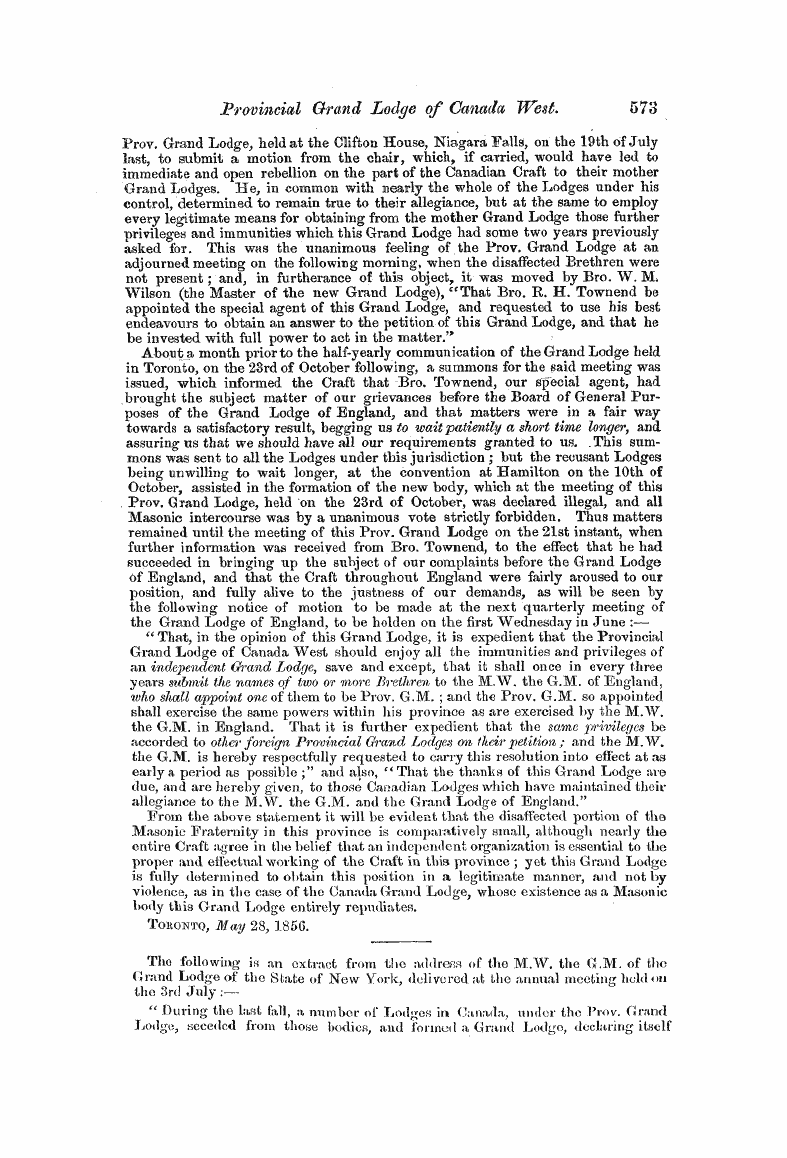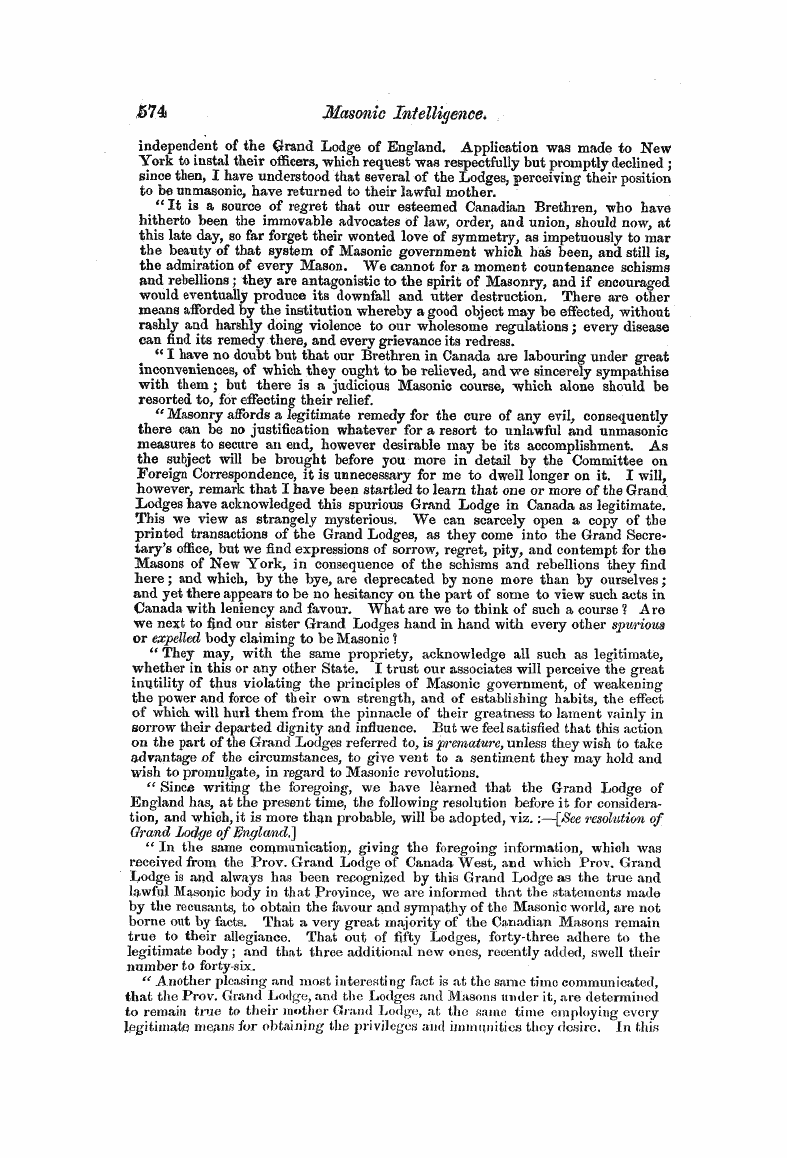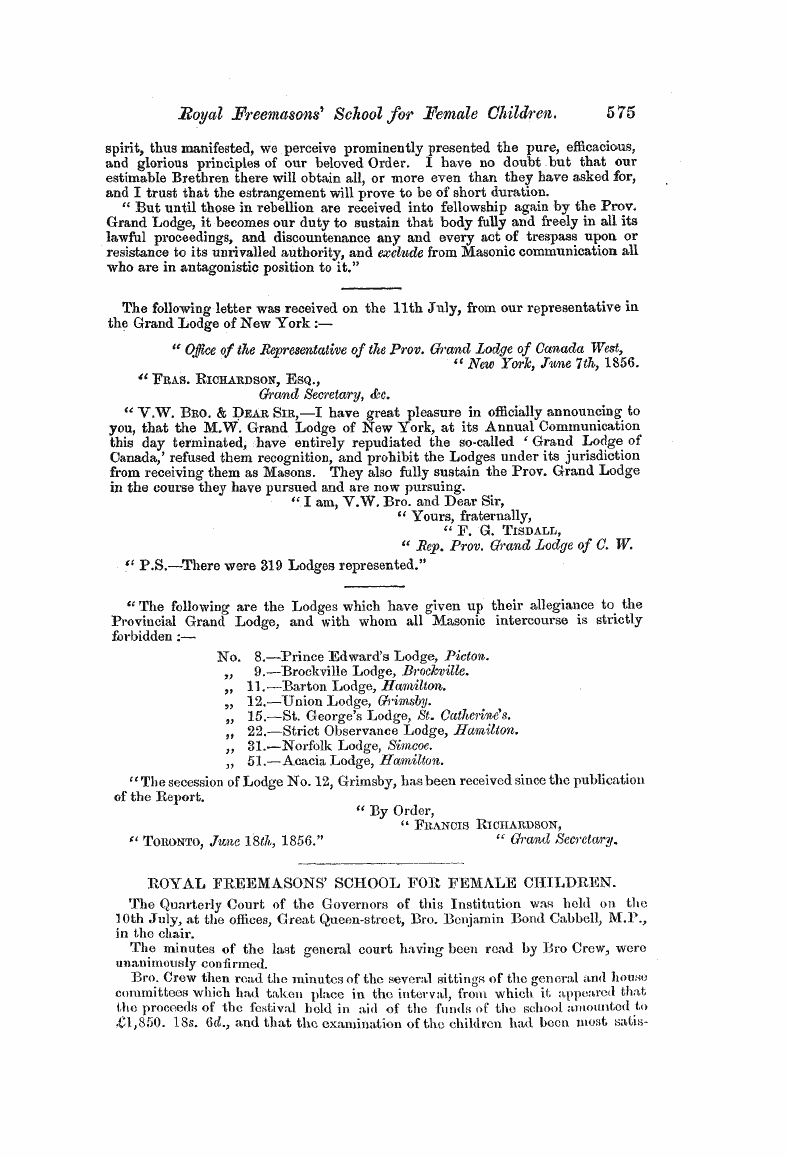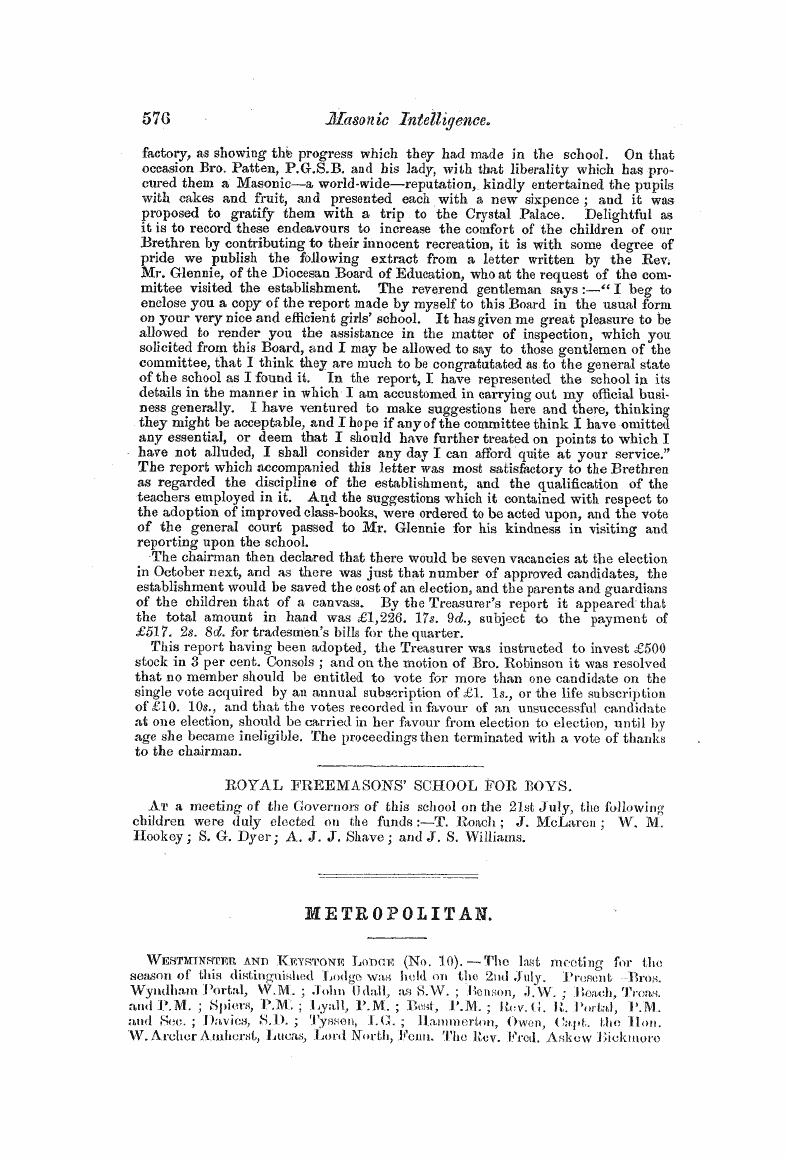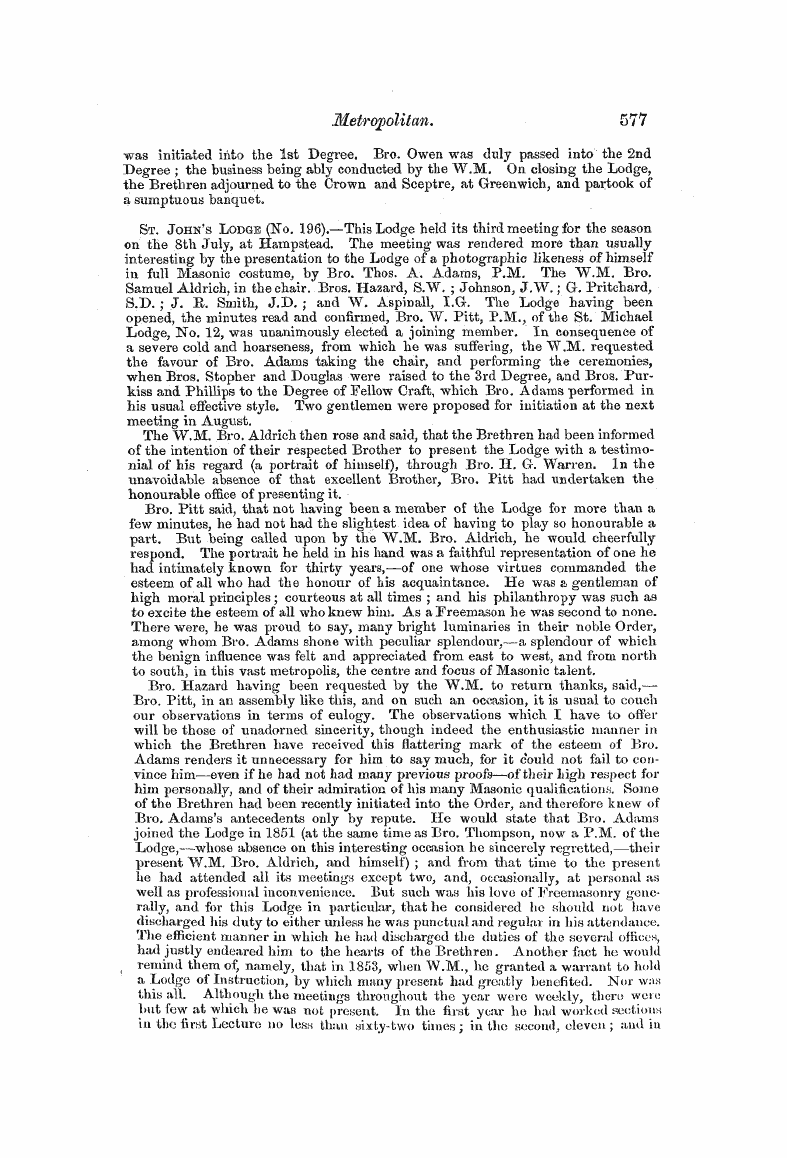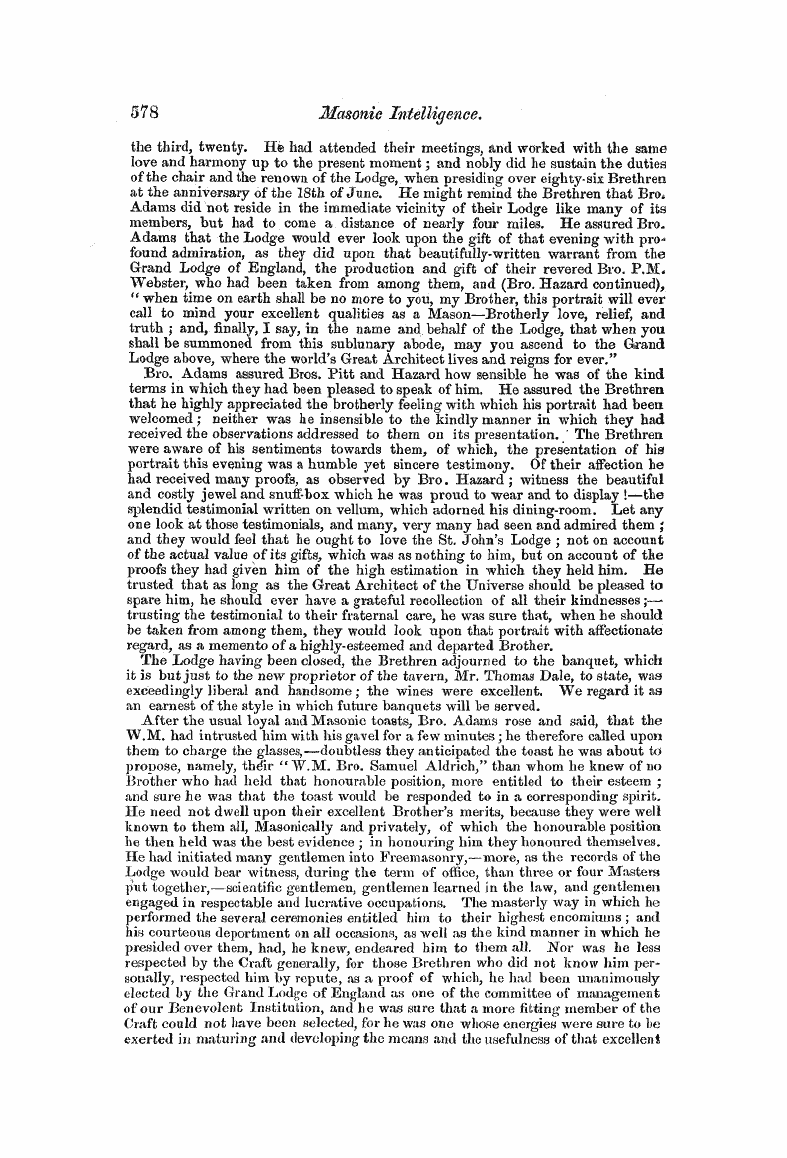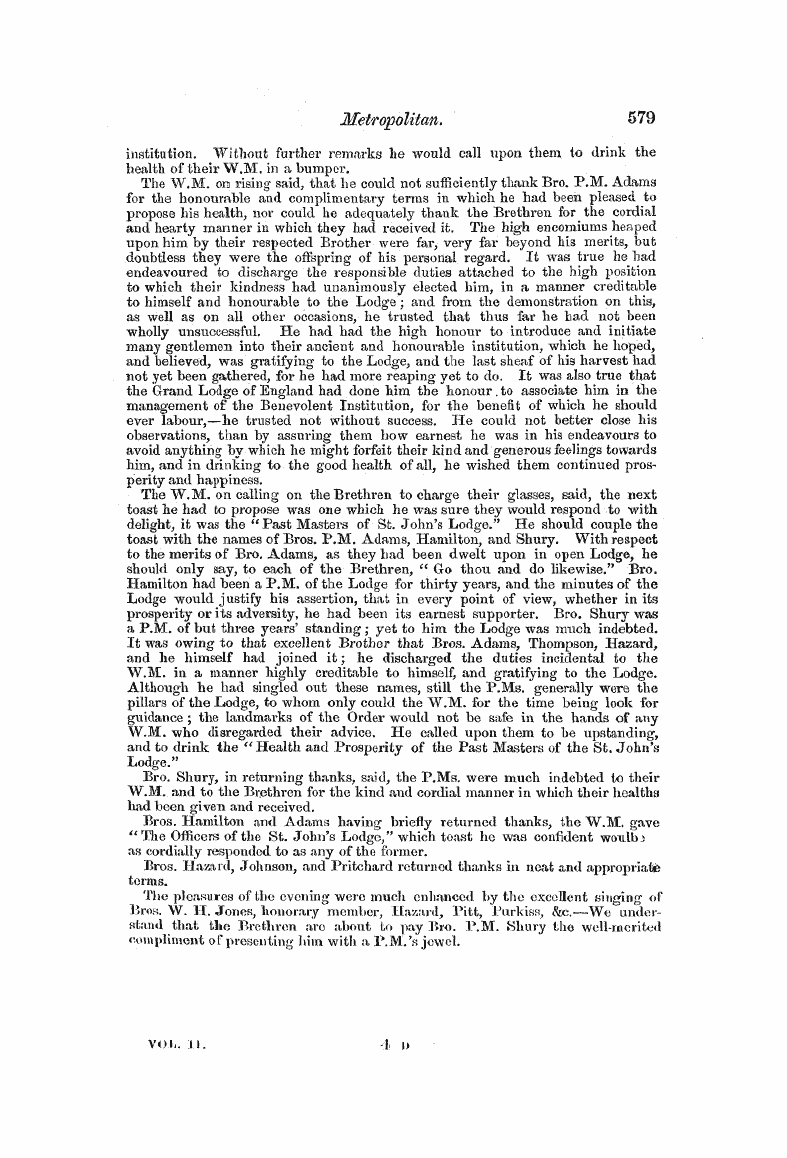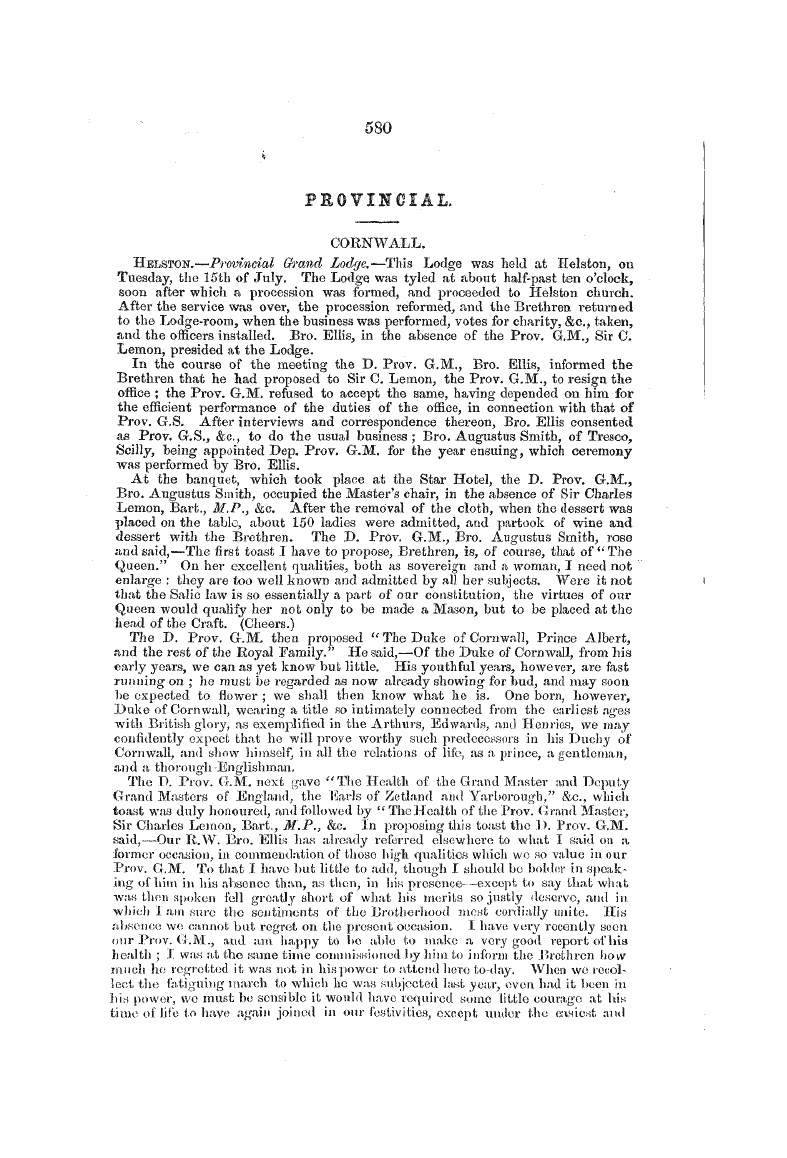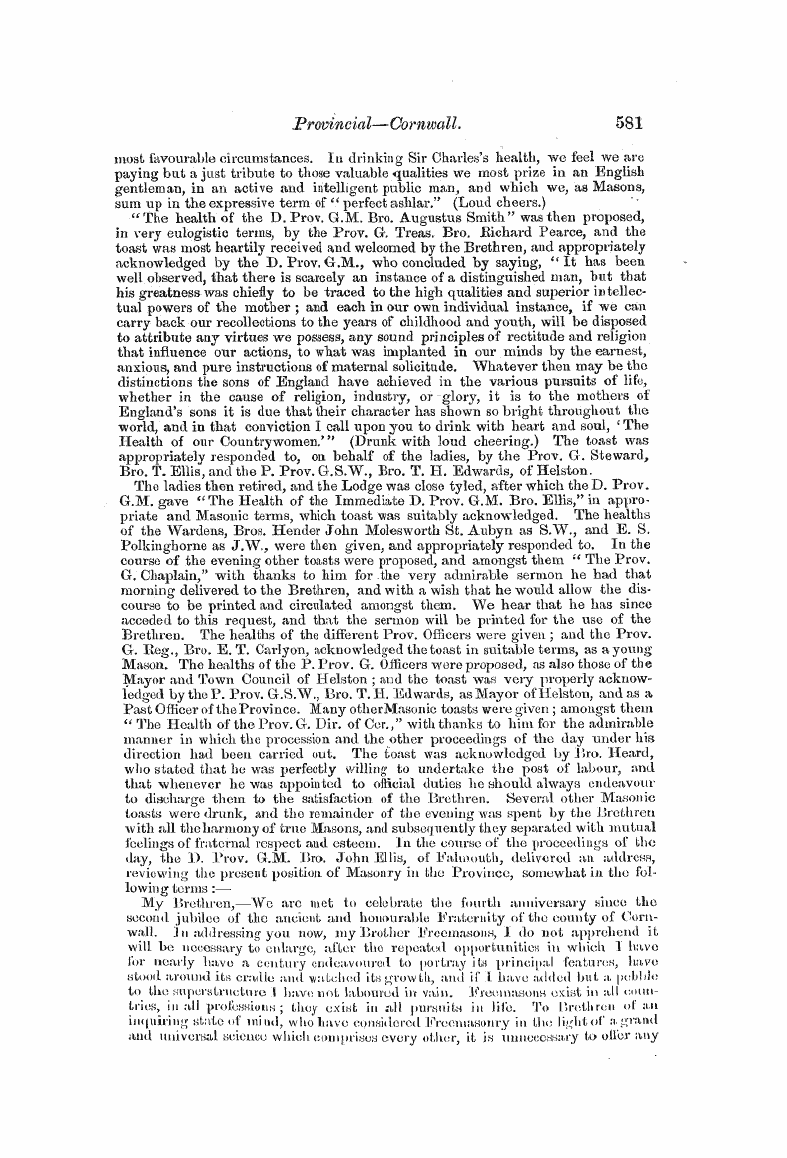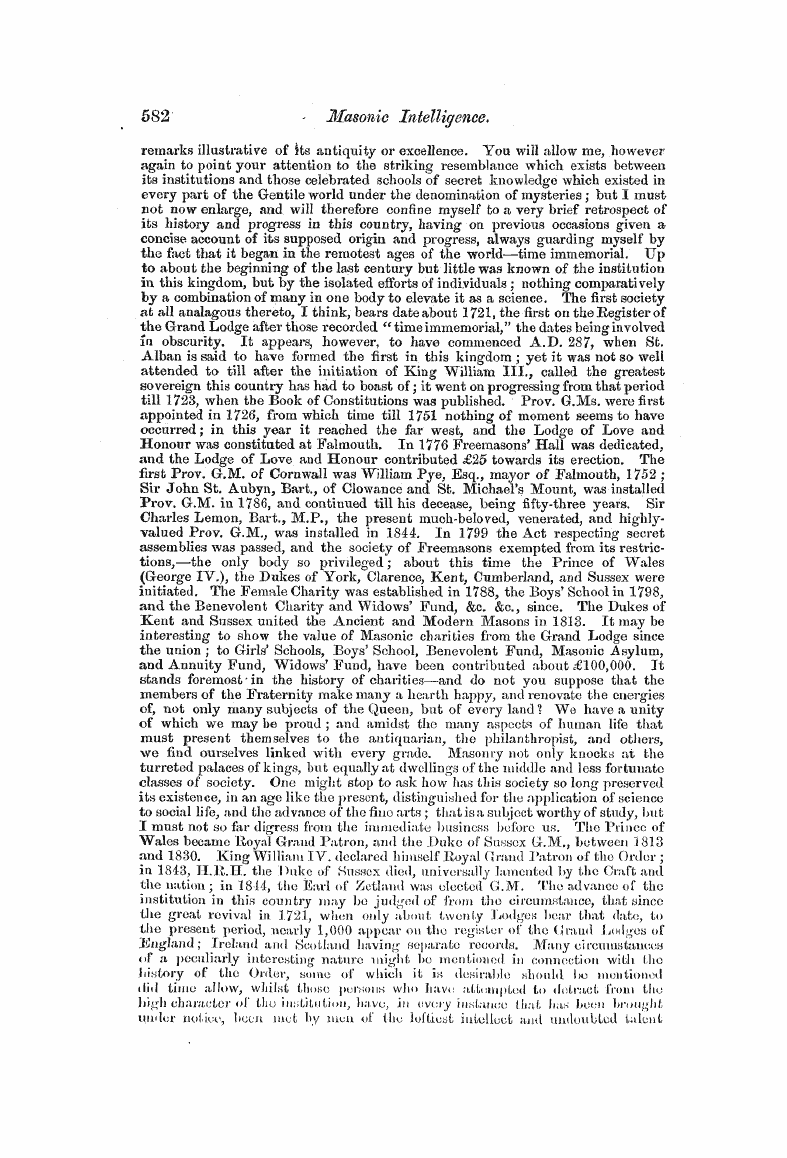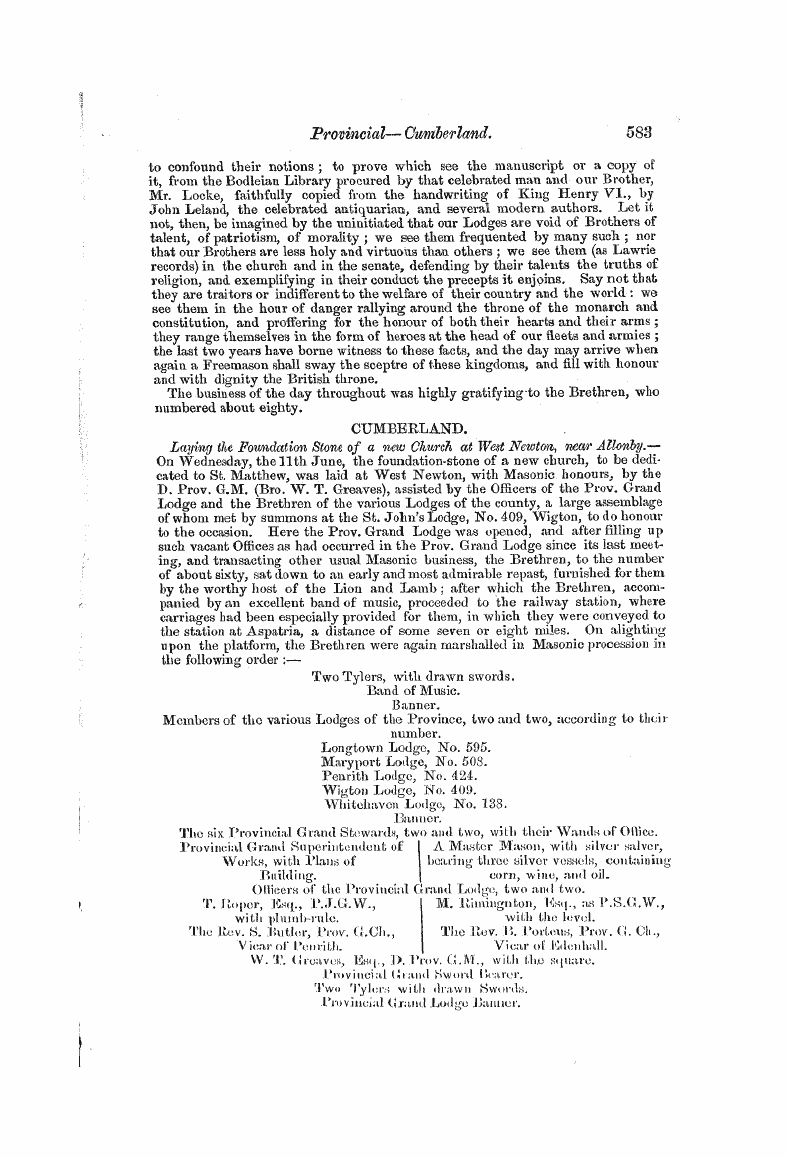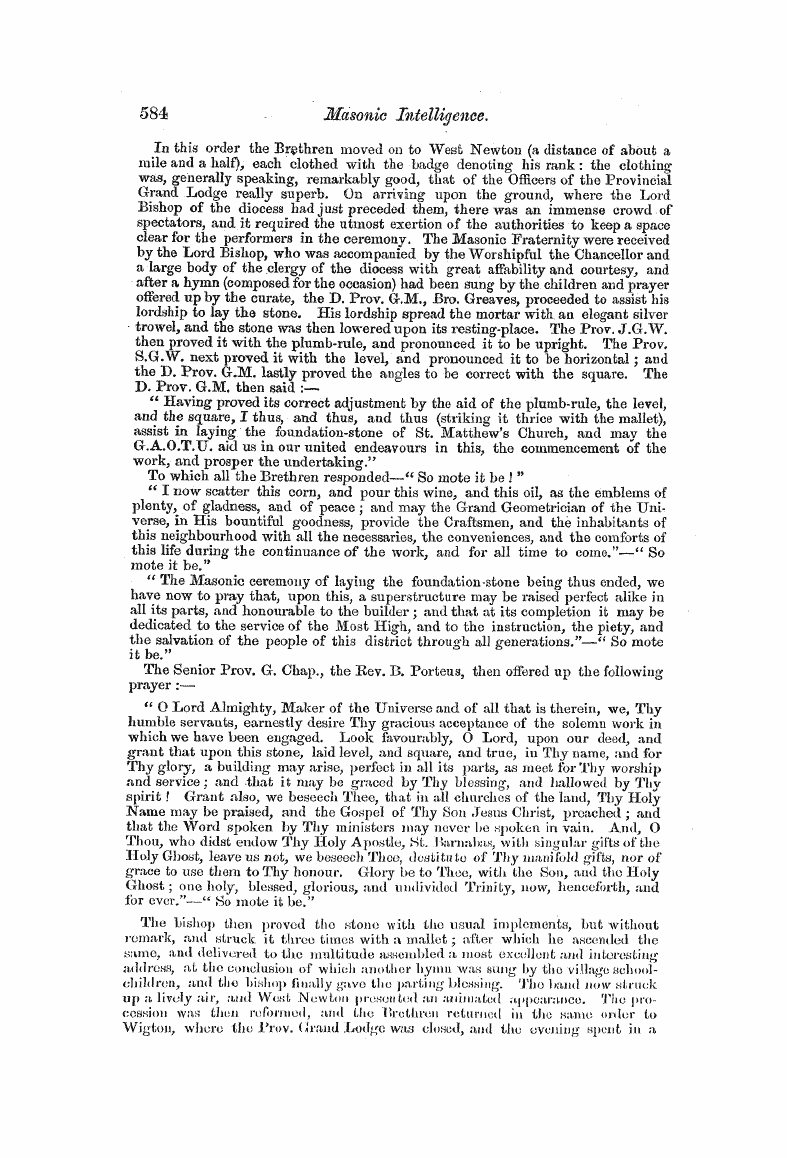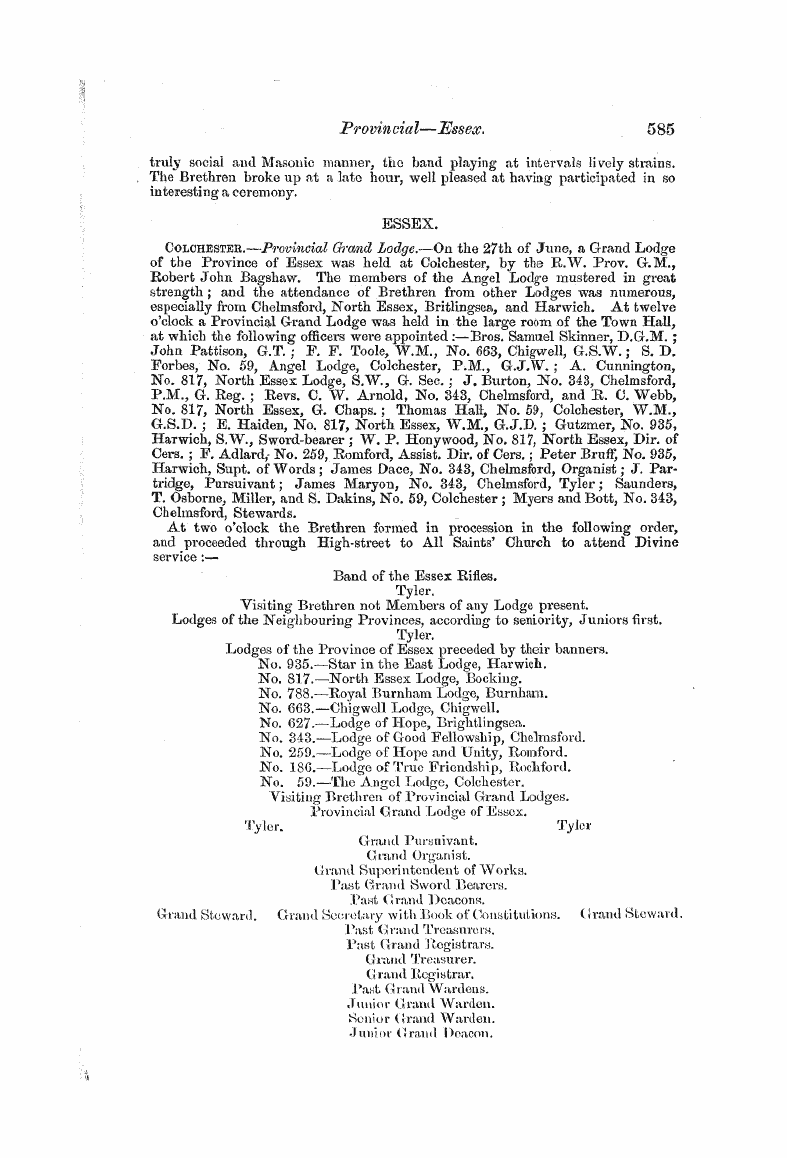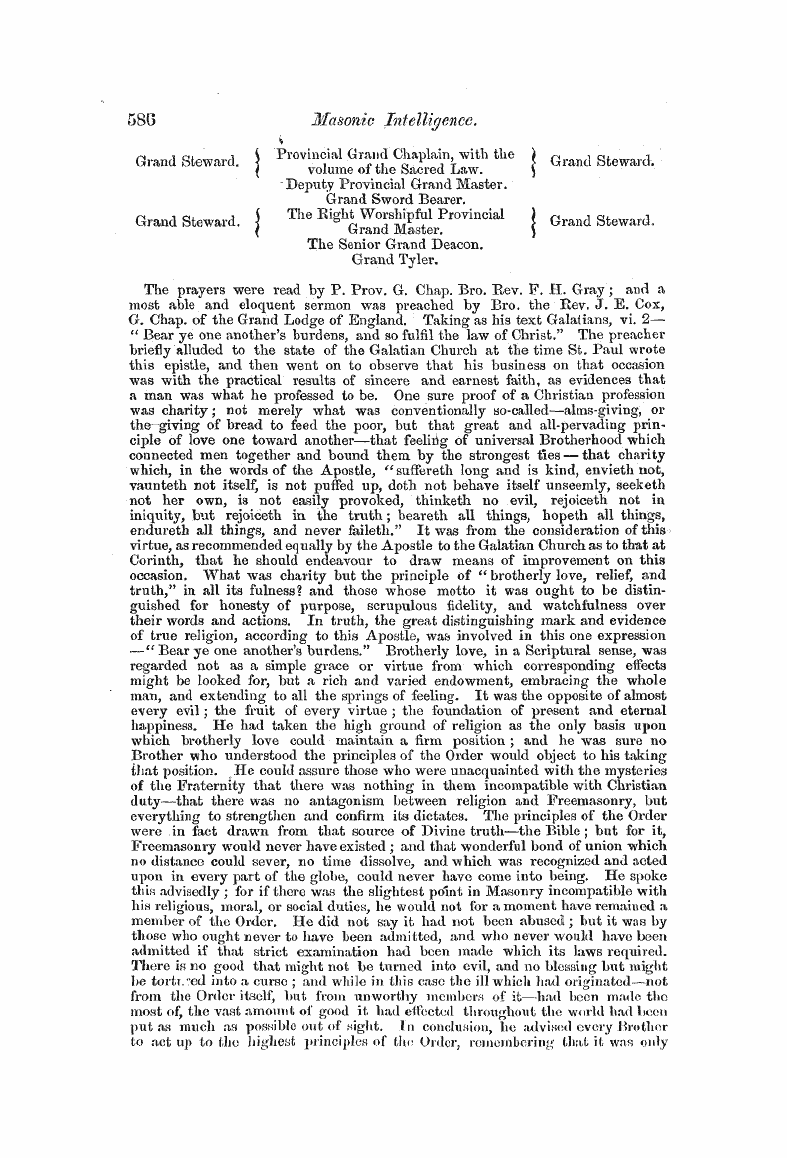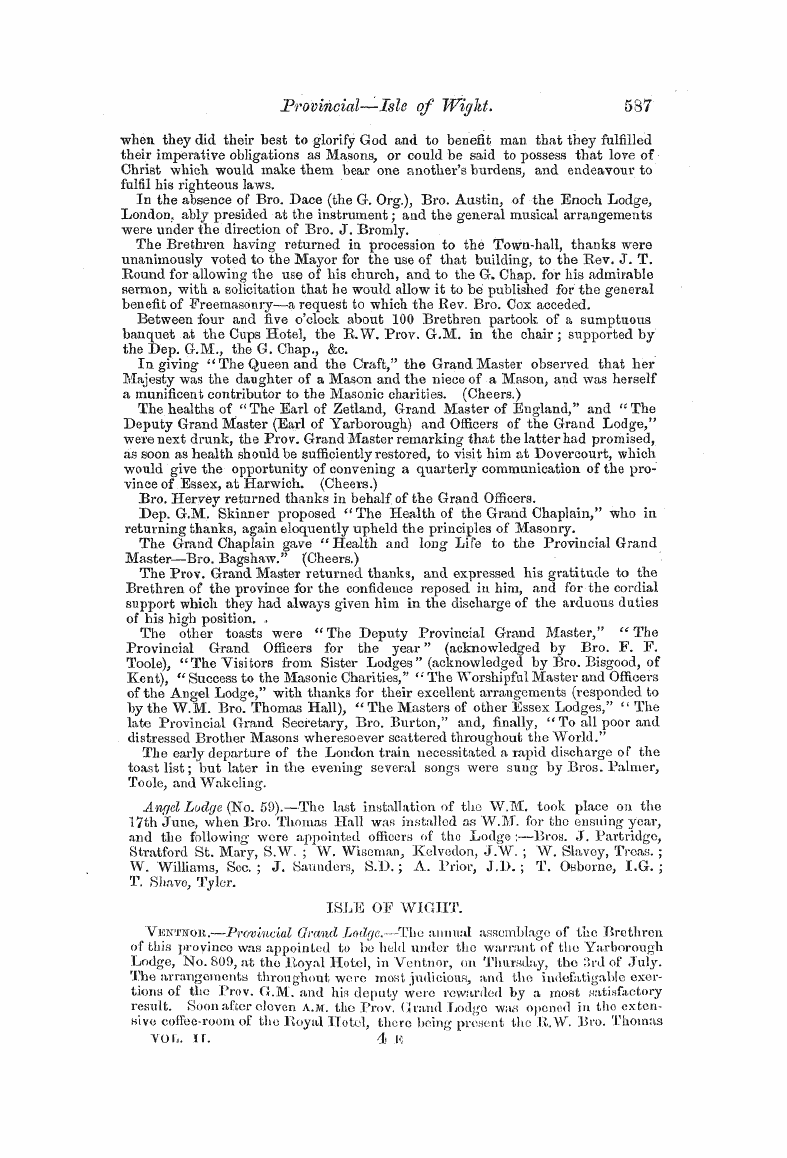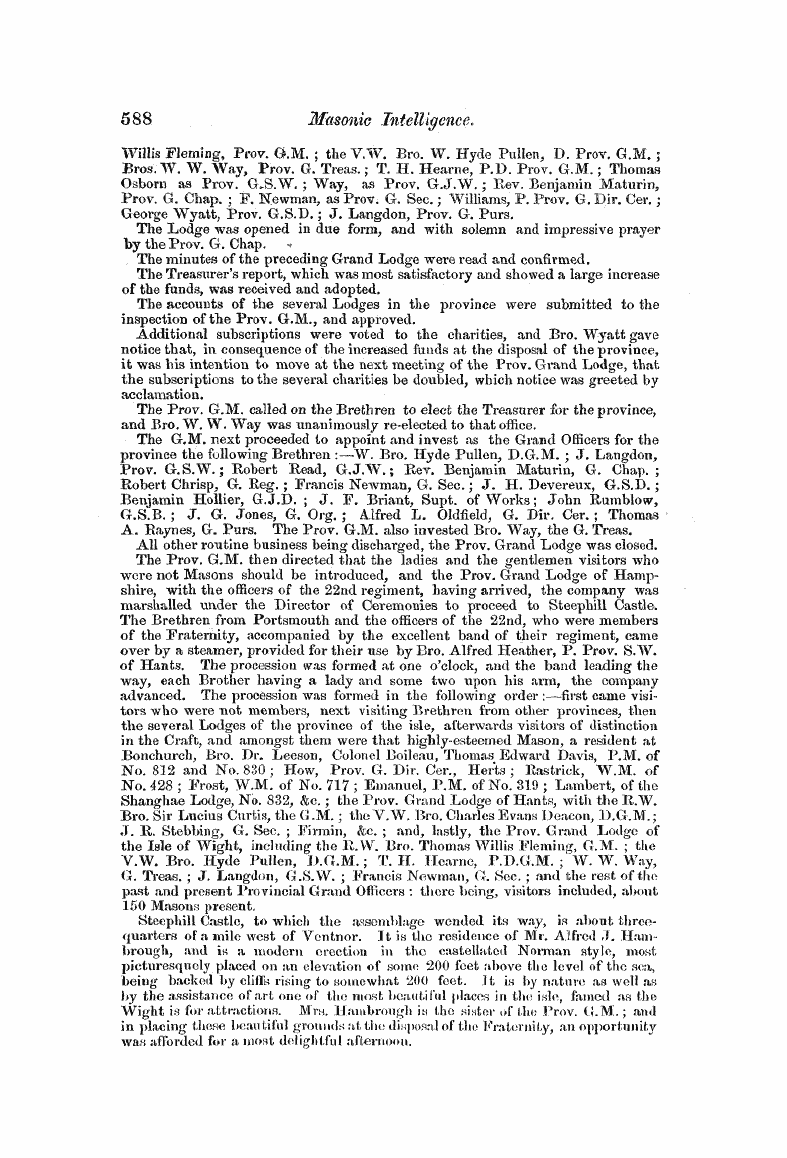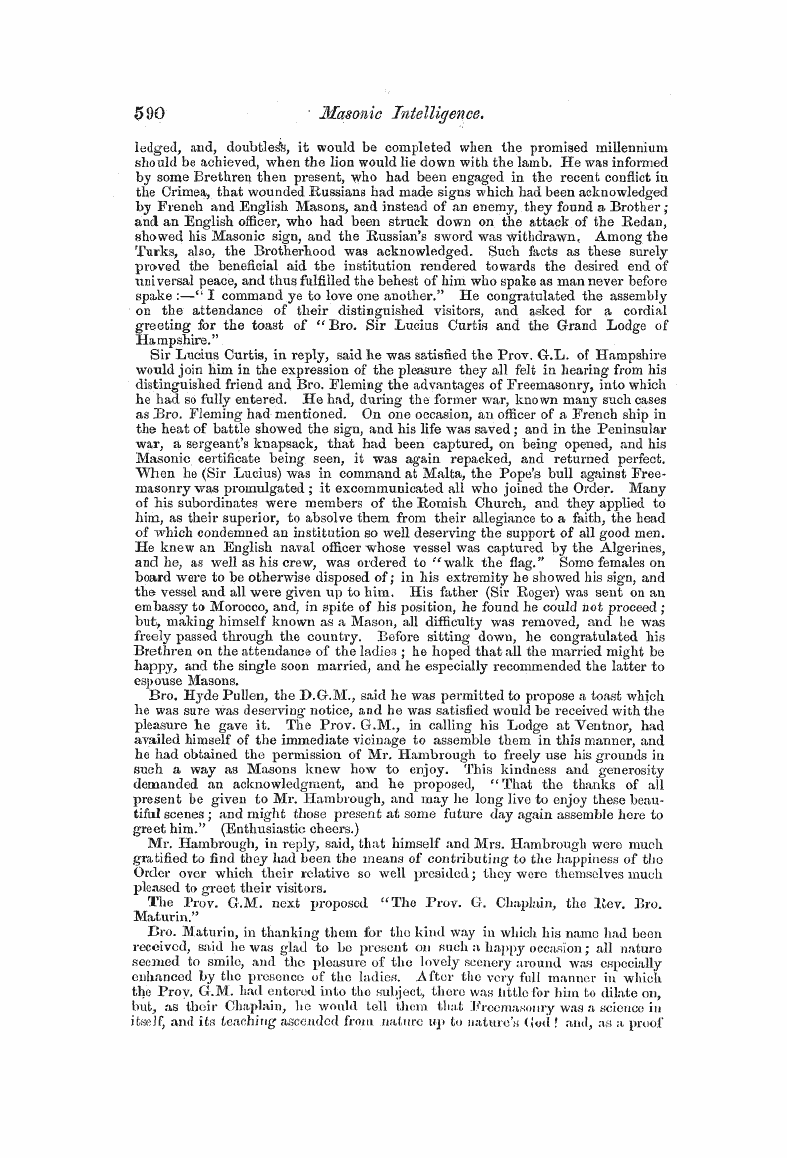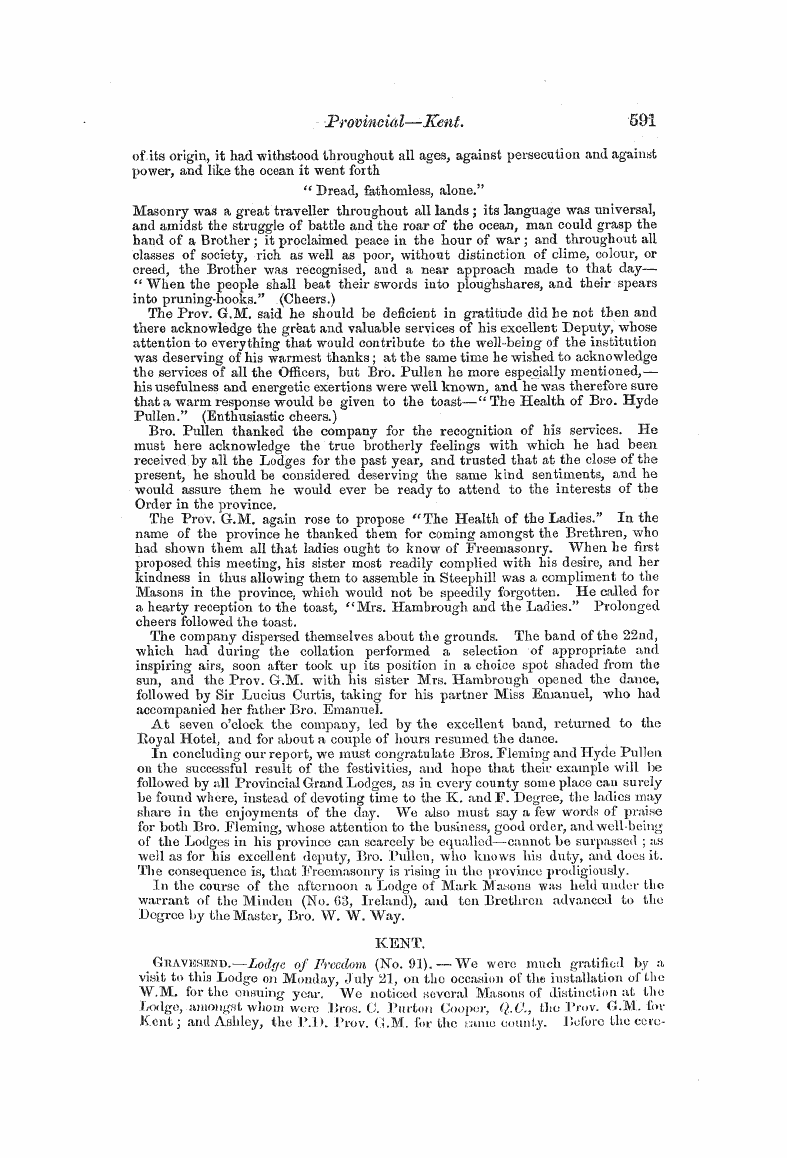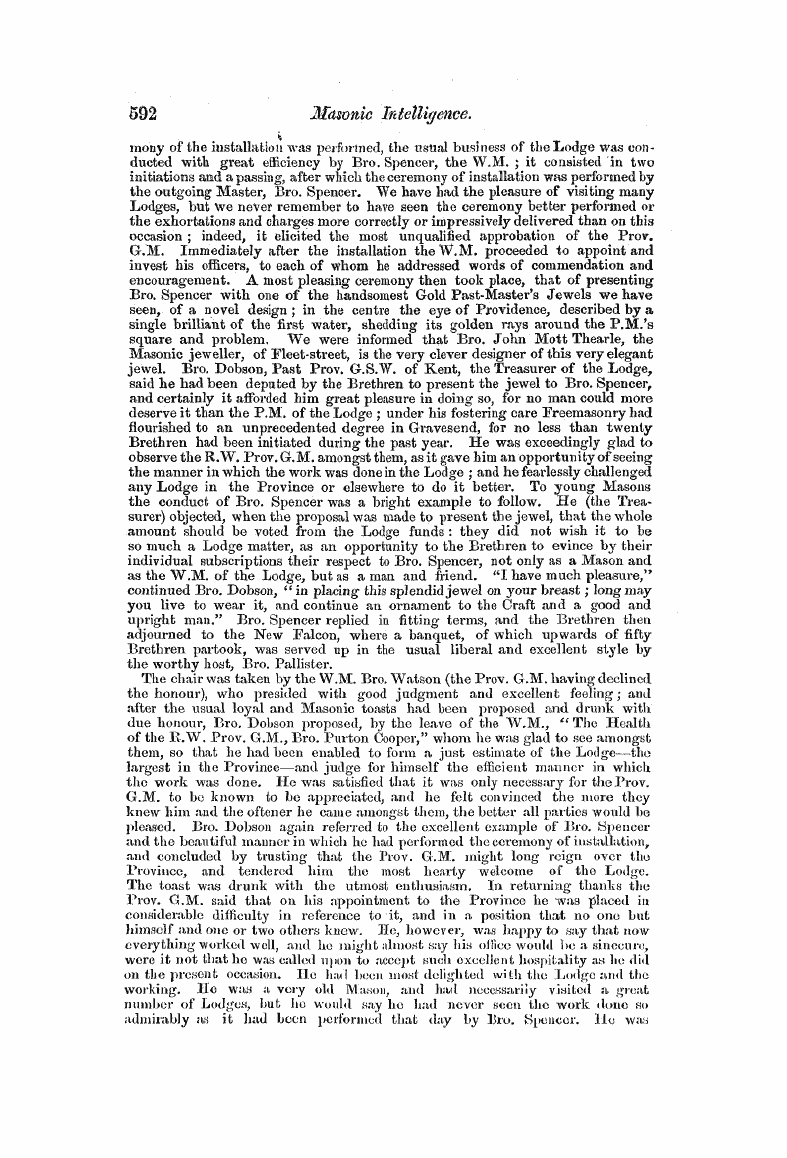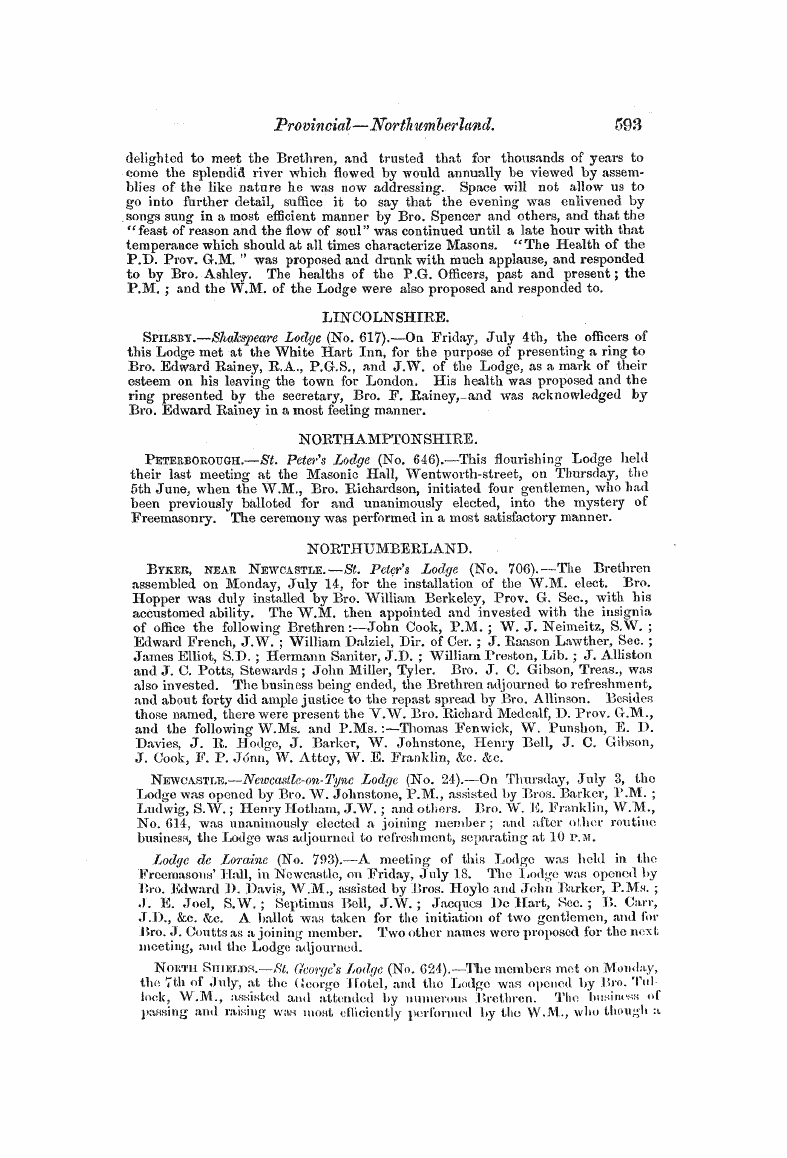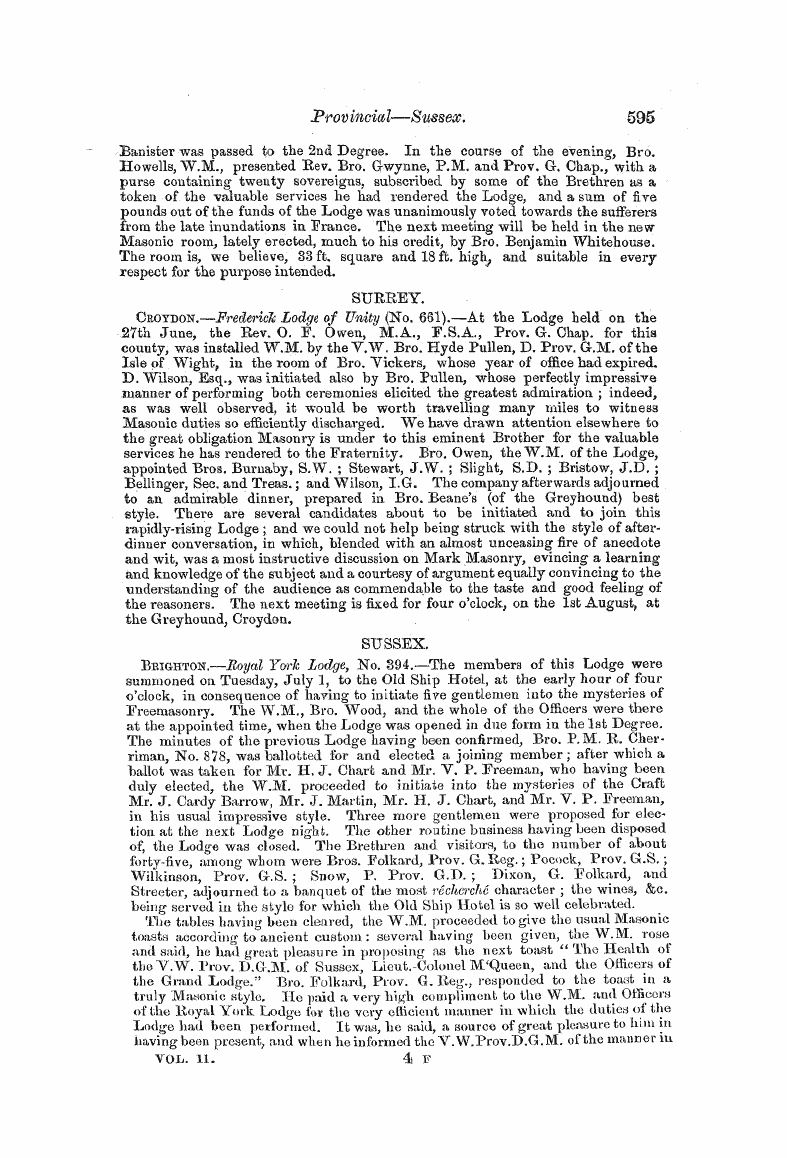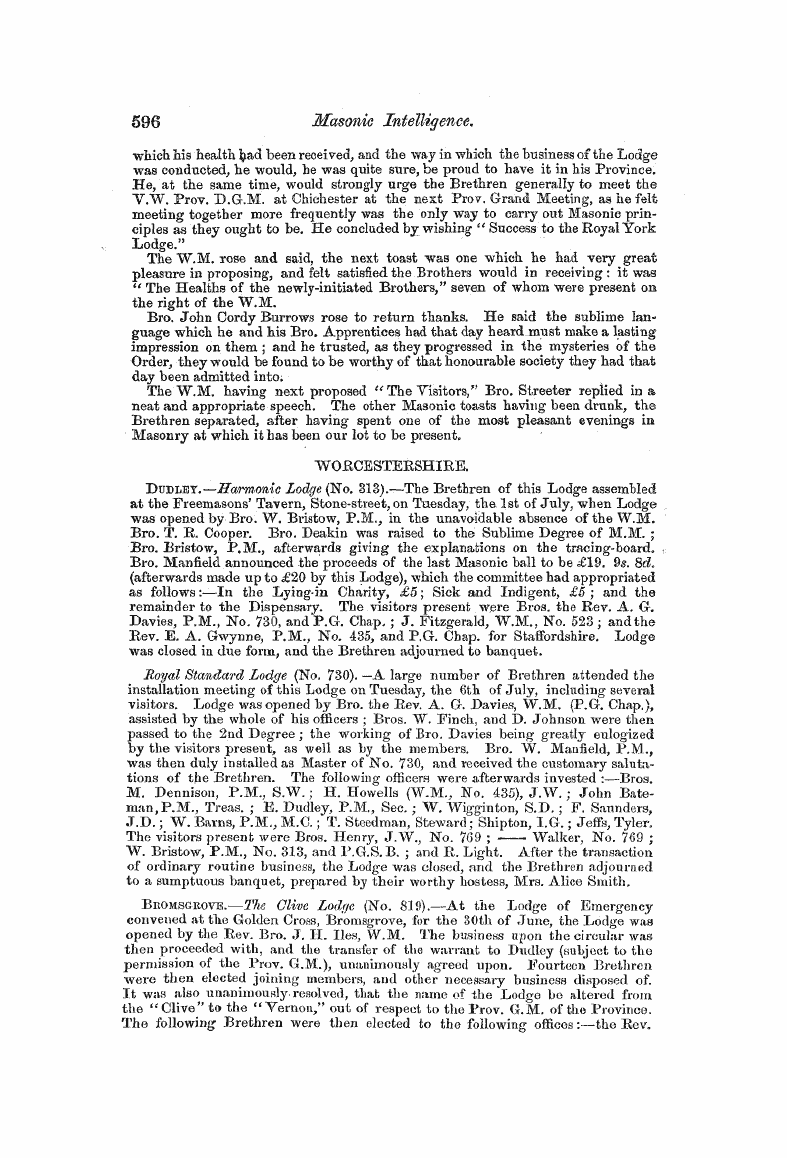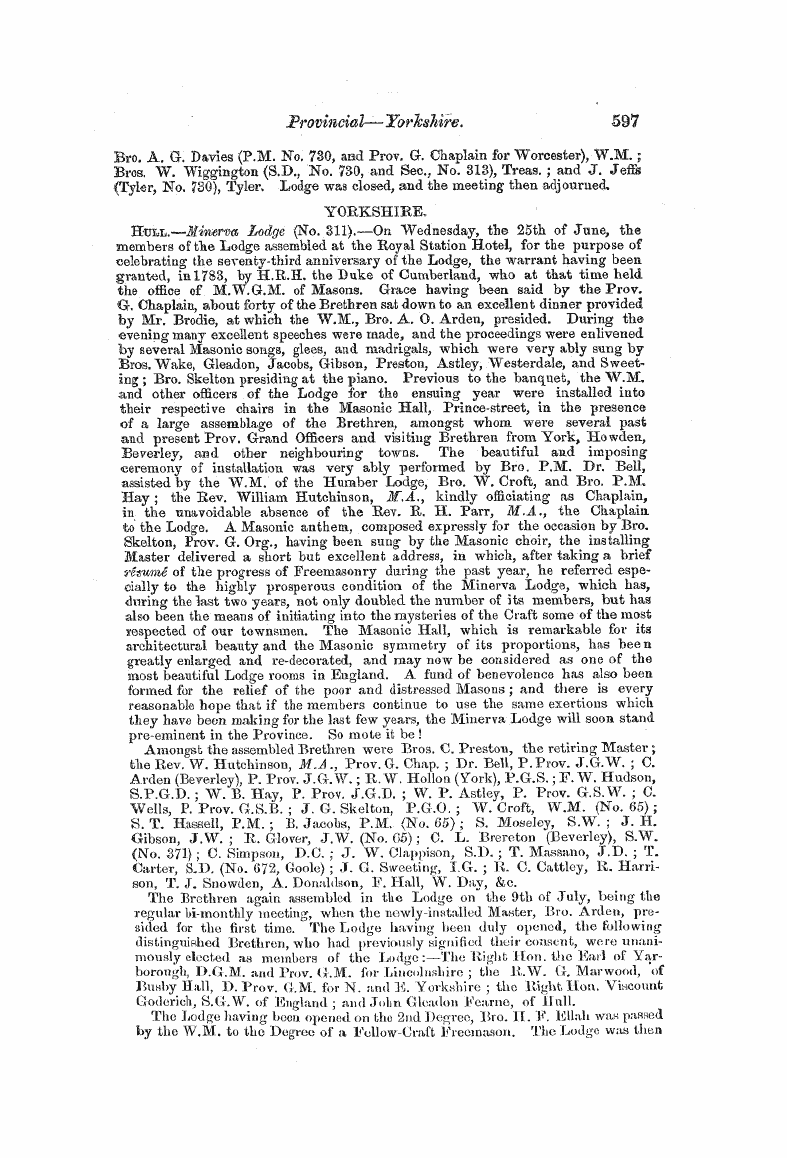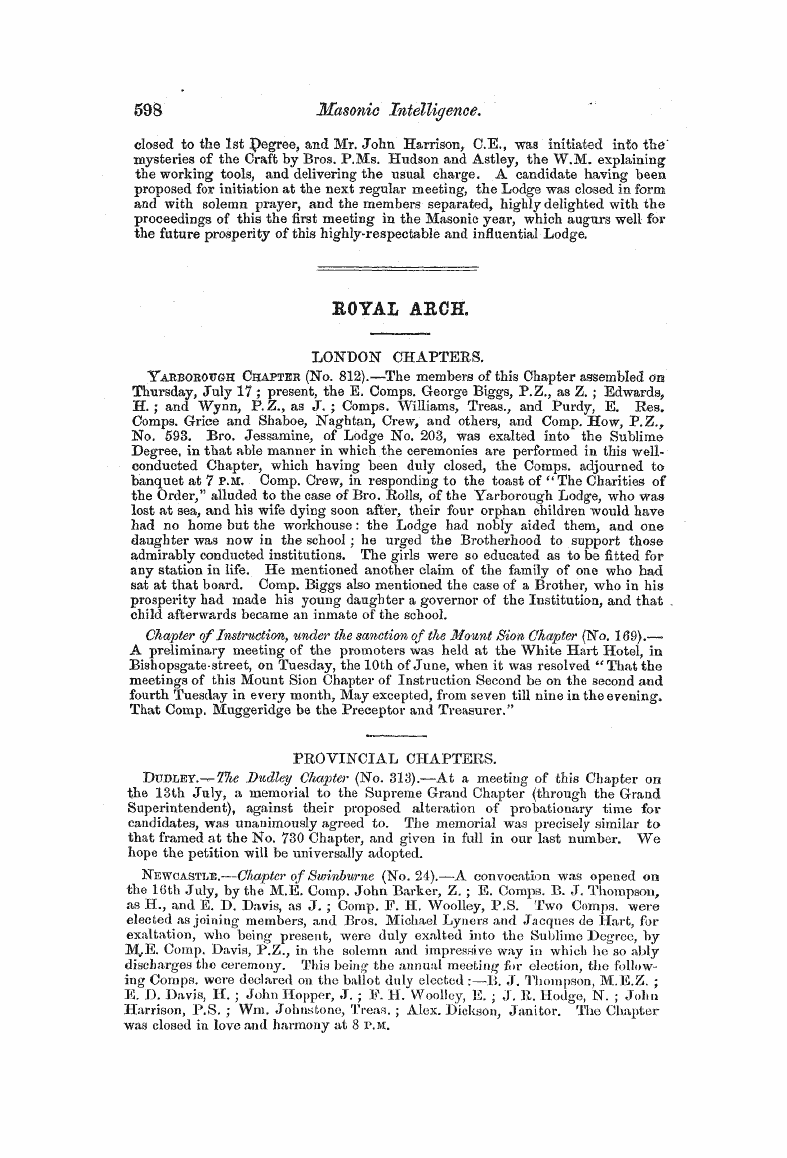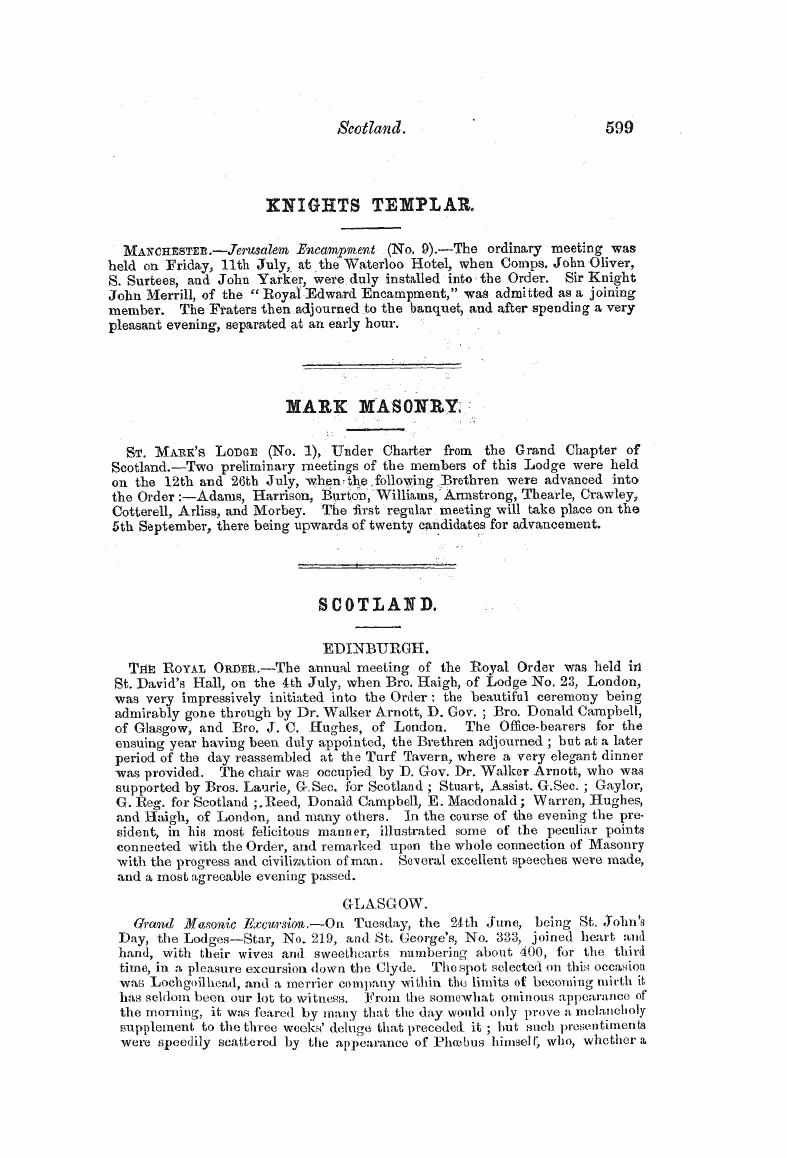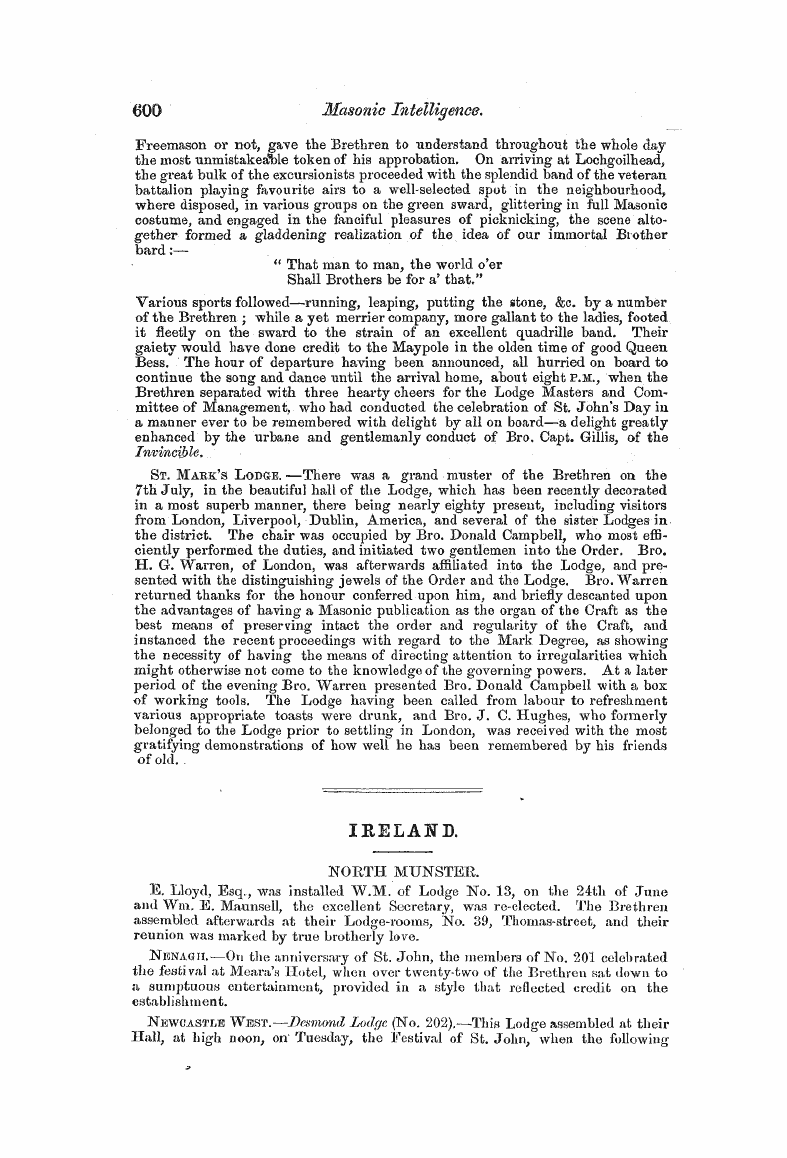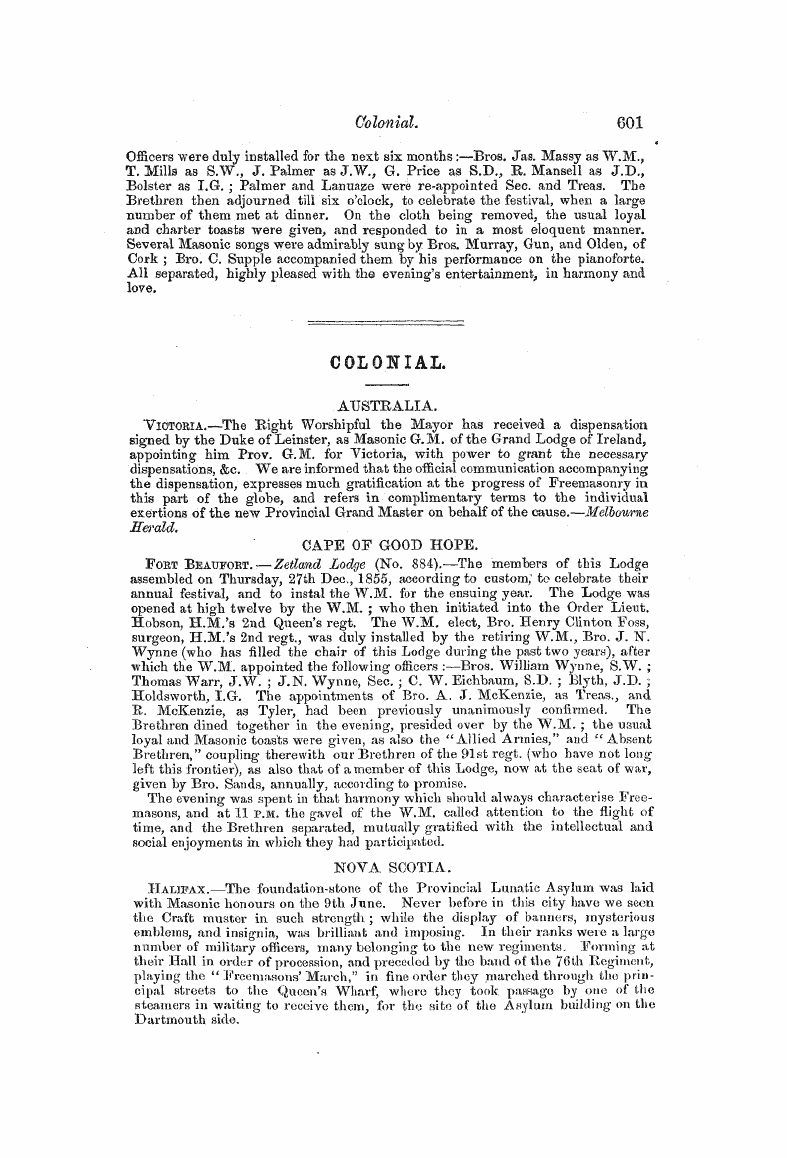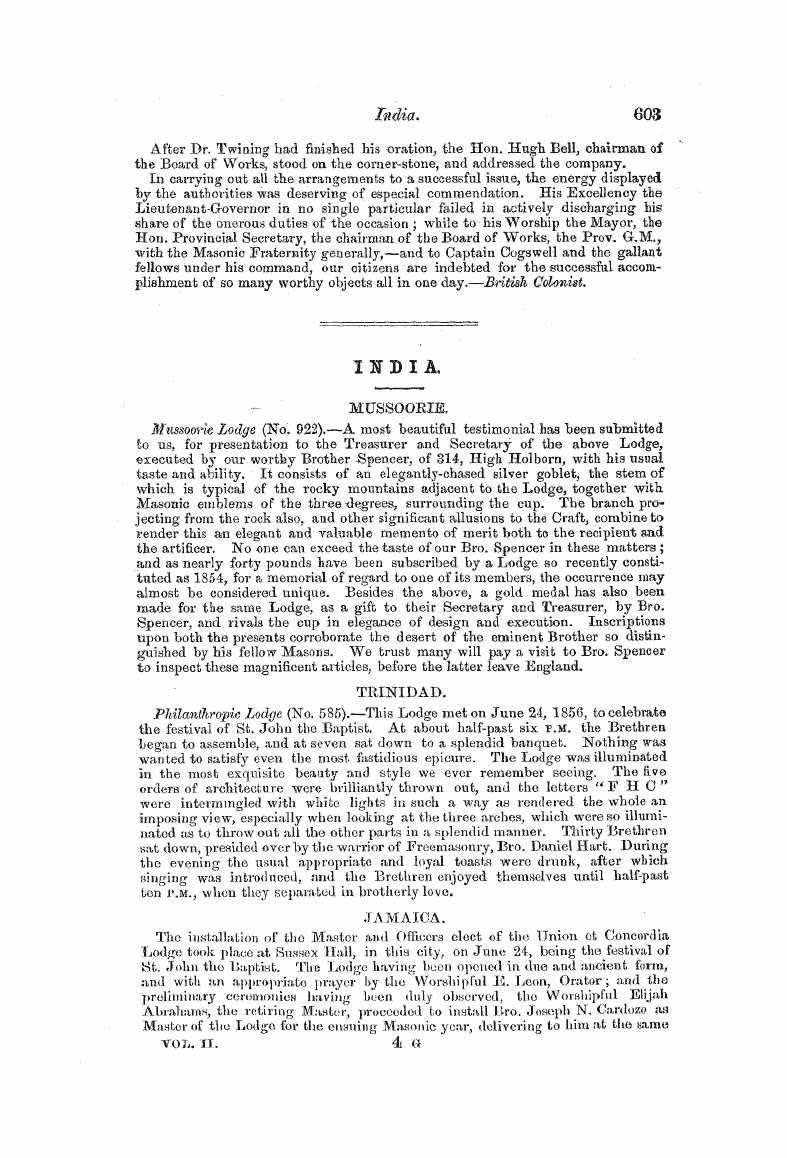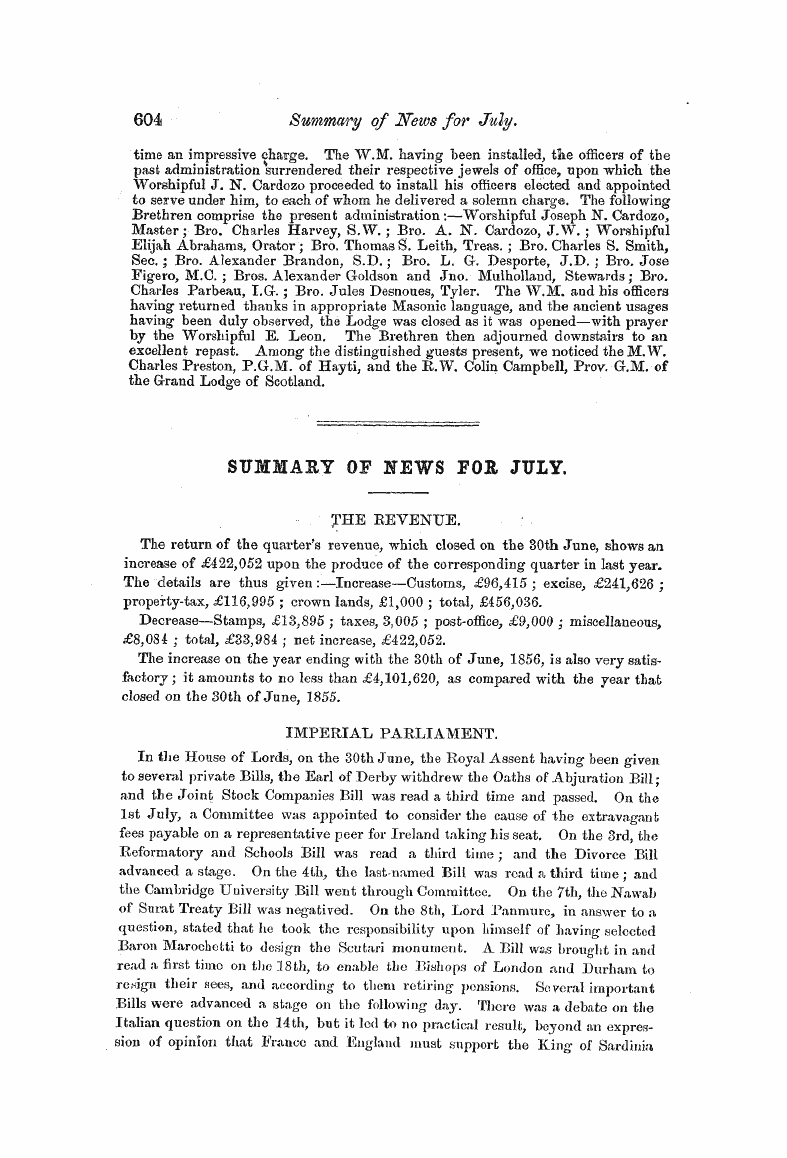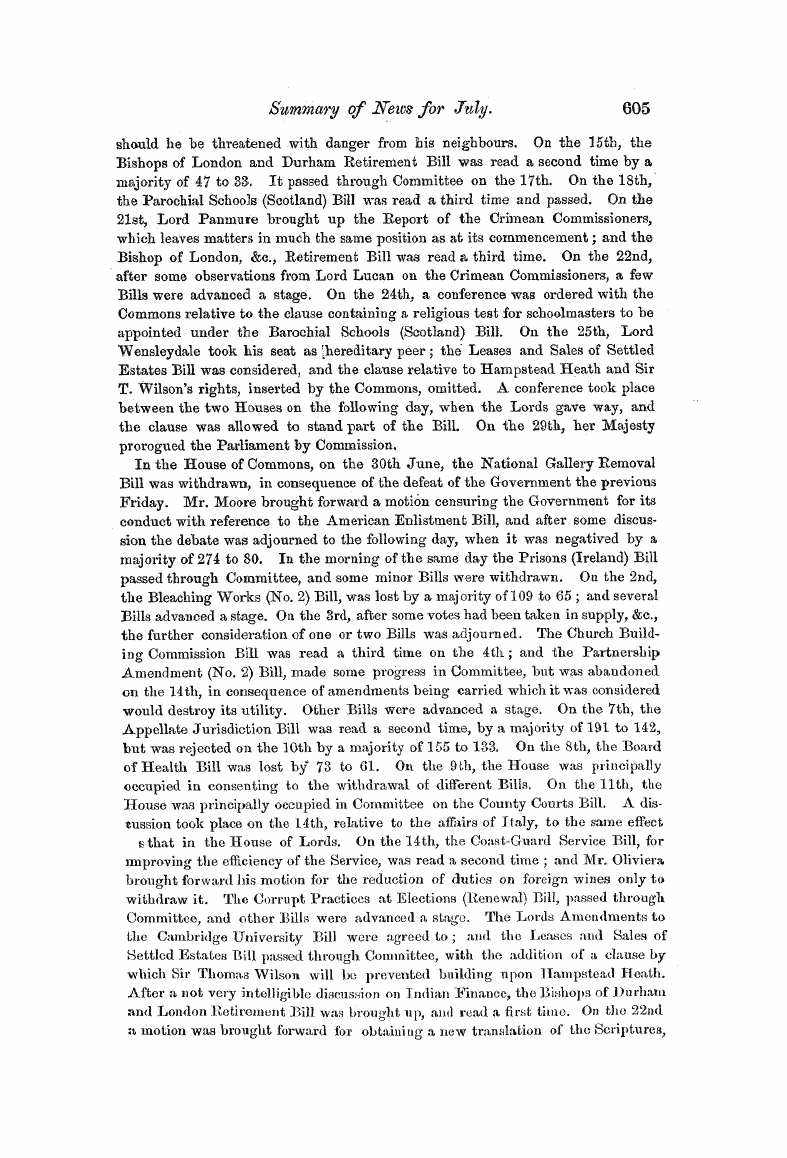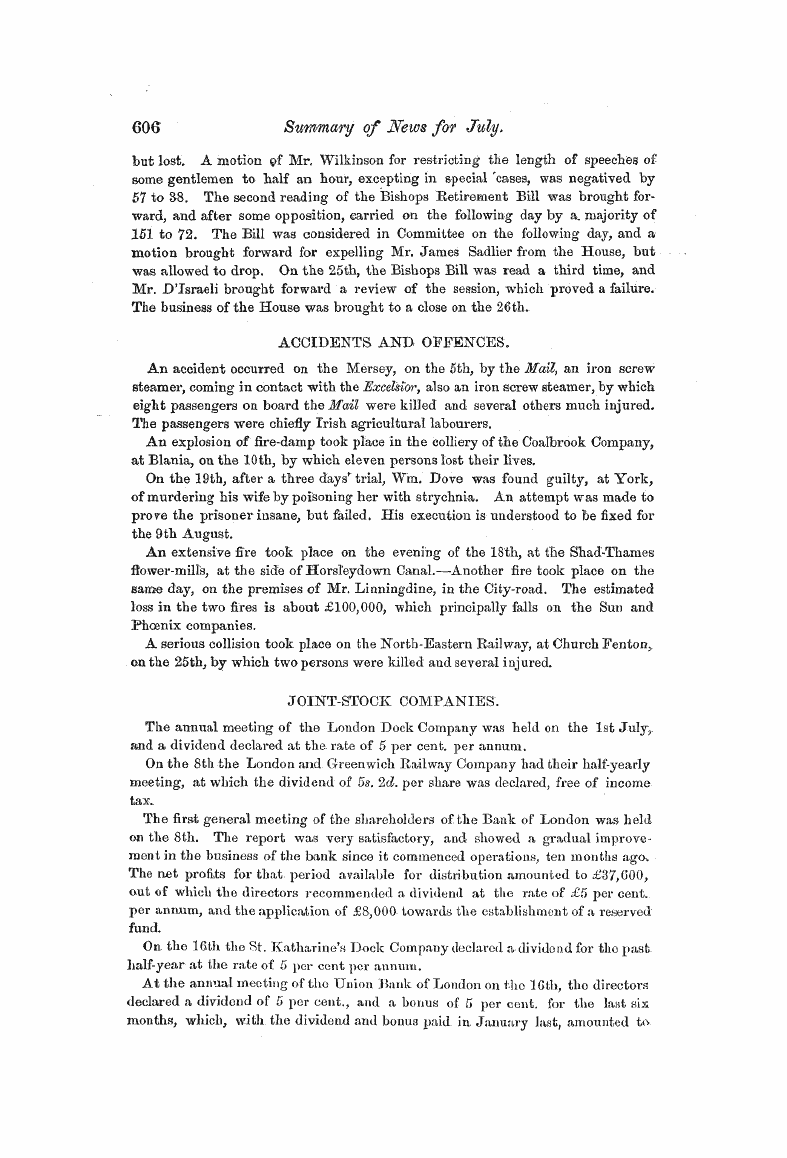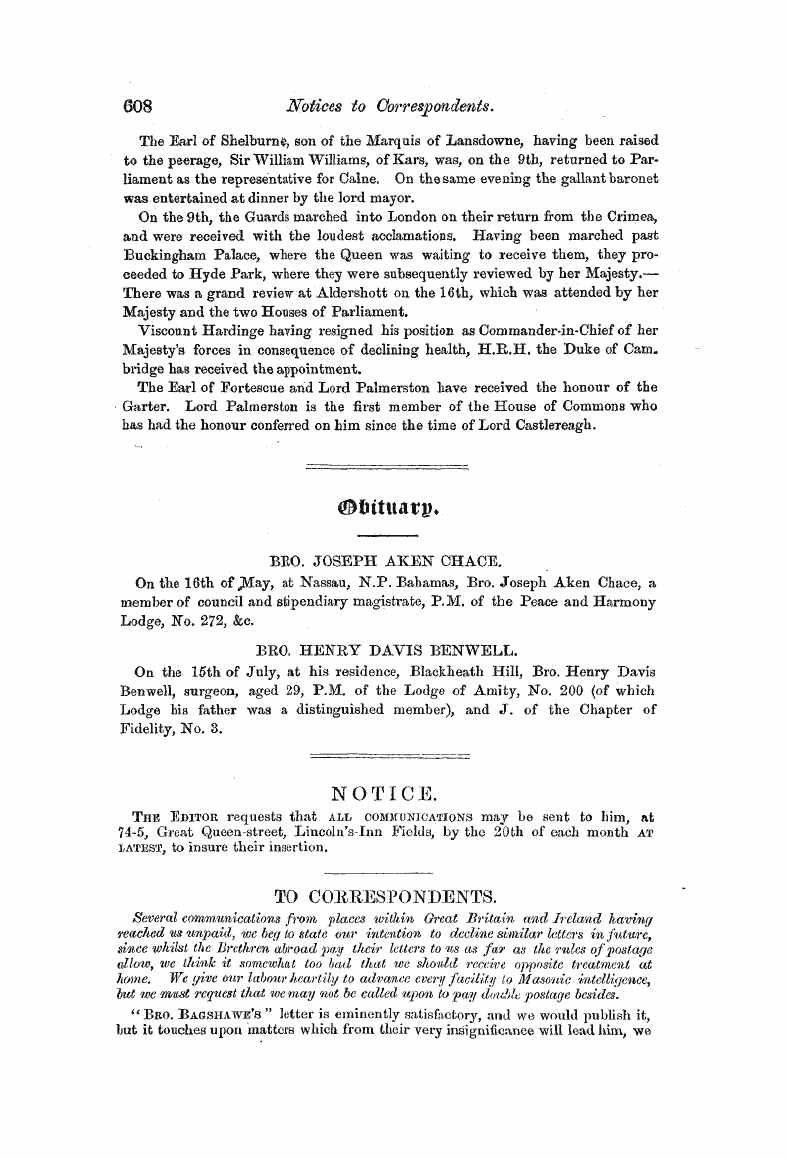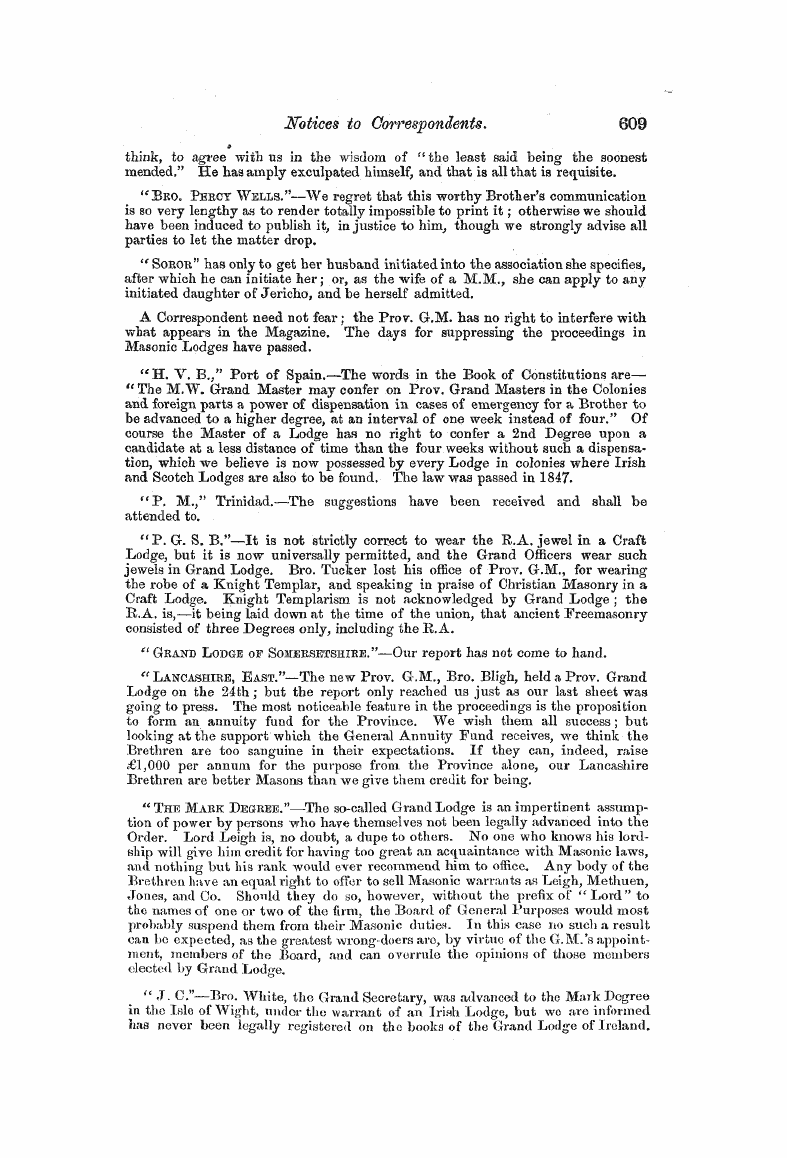-
Articles/Ads
Article ON THE MYSTERIES OF THE EARLY AGES AS CO... ← Page 2 of 6 →
Note: This text has been automatically extracted via Optical Character Recognition (OCR) software.
On The Mysteries Of The Early Ages As Co...
established themselves in Scandinavia ( the Sweden and Norway of the present day ) , extending from thence to the Alps and Pyrenees . They brought with the in the Druidical religion , the chiefs of which were divided into three classes * First , the Vacies , who were instructed in the secret tenets of their sect , and who acted both in
a civil and ecclesiastical capacity ; secondly , the Bards , who chanted the hymns in the ceremonies of the sacrifice , and sang the heroic deeds of their ancestors , being particularly trained to the study of genealogies ; and thirdly , the Eubages , who presided over the government of the people , the cultivation of the soil , and who superintended the construction of the astronomical tables . From the priests being
so constantly withdrawn from the people in the depths of the forests , they were seldom seen , except in the performance of their religious rites , or in the execution of their civil duties , when their presence was actually required ; by which means they preserved the character of additional sanctity in the general estimation . As had before been the case in Egypt during the earliest ages of the world , they admitted
into their Order by initiation only such as seemed most suited to receive instruction in the mysteries of their religion , and that after a long and severe trial . Twenty years were deemed hardly sufficient for the preparative studies of the candidate ; no book nor writing was allowed to supply assistance to the memory , as the whole process bore the stamp of exclusion and secrecy .
Hence a great length of time , and proofs of study of the severest description became necessary before the candidate could claim a right to be advanced to a situation which obtained the universal veneration of the people . The principal sites of these ceremonies were in the Forest of Dreux in France , and in the Isles of Man and Anglesey in England ; but little is actually known of them , except
that in the sacrifices the priests often immolated human beings to their gods ; that their altars were sometimes of a triangular shape , as well as consisting of a plain stone , with its surface on a slope ; that they exhibited a mystical chest or coifer , and a sword , an emblem of the rays of light , dedicated to Belinus ( Baal or Bel , probably ) , their representative of the sun . After the Druids were driven by the
persecution of the Romans from Gaul and Britain , they took refuge in Scandinavia and on the Continent of Germany , where vestiges of the Order remained till the twelfth century , and may perhaps be still traced as connected with the worship of the sun in the traditions relating to Oden , or Woden , and Thor , and in the Edda of Scandinavia .
If we examine the structures left by the Druids , we may perhaps be enabled to draw some inference as to their tenets , and the objects they had in view in the arrangement of their buildings . Without entering into a discussion on their great temple at Stonehengo ( which has always been a subject of controversy ) , there are many other vestiges of their religion / less known , but equally deserving investigation . As , however , the course of time , the dilapidations produced byroads , and the progress of civilization have effected great alterations in the
Note: This text has been automatically extracted via Optical Character Recognition (OCR) software.
On The Mysteries Of The Early Ages As Co...
established themselves in Scandinavia ( the Sweden and Norway of the present day ) , extending from thence to the Alps and Pyrenees . They brought with the in the Druidical religion , the chiefs of which were divided into three classes * First , the Vacies , who were instructed in the secret tenets of their sect , and who acted both in
a civil and ecclesiastical capacity ; secondly , the Bards , who chanted the hymns in the ceremonies of the sacrifice , and sang the heroic deeds of their ancestors , being particularly trained to the study of genealogies ; and thirdly , the Eubages , who presided over the government of the people , the cultivation of the soil , and who superintended the construction of the astronomical tables . From the priests being
so constantly withdrawn from the people in the depths of the forests , they were seldom seen , except in the performance of their religious rites , or in the execution of their civil duties , when their presence was actually required ; by which means they preserved the character of additional sanctity in the general estimation . As had before been the case in Egypt during the earliest ages of the world , they admitted
into their Order by initiation only such as seemed most suited to receive instruction in the mysteries of their religion , and that after a long and severe trial . Twenty years were deemed hardly sufficient for the preparative studies of the candidate ; no book nor writing was allowed to supply assistance to the memory , as the whole process bore the stamp of exclusion and secrecy .
Hence a great length of time , and proofs of study of the severest description became necessary before the candidate could claim a right to be advanced to a situation which obtained the universal veneration of the people . The principal sites of these ceremonies were in the Forest of Dreux in France , and in the Isles of Man and Anglesey in England ; but little is actually known of them , except
that in the sacrifices the priests often immolated human beings to their gods ; that their altars were sometimes of a triangular shape , as well as consisting of a plain stone , with its surface on a slope ; that they exhibited a mystical chest or coifer , and a sword , an emblem of the rays of light , dedicated to Belinus ( Baal or Bel , probably ) , their representative of the sun . After the Druids were driven by the
persecution of the Romans from Gaul and Britain , they took refuge in Scandinavia and on the Continent of Germany , where vestiges of the Order remained till the twelfth century , and may perhaps be still traced as connected with the worship of the sun in the traditions relating to Oden , or Woden , and Thor , and in the Edda of Scandinavia .
If we examine the structures left by the Druids , we may perhaps be enabled to draw some inference as to their tenets , and the objects they had in view in the arrangement of their buildings . Without entering into a discussion on their great temple at Stonehengo ( which has always been a subject of controversy ) , there are many other vestiges of their religion / less known , but equally deserving investigation . As , however , the course of time , the dilapidations produced byroads , and the progress of civilization have effected great alterations in the




















